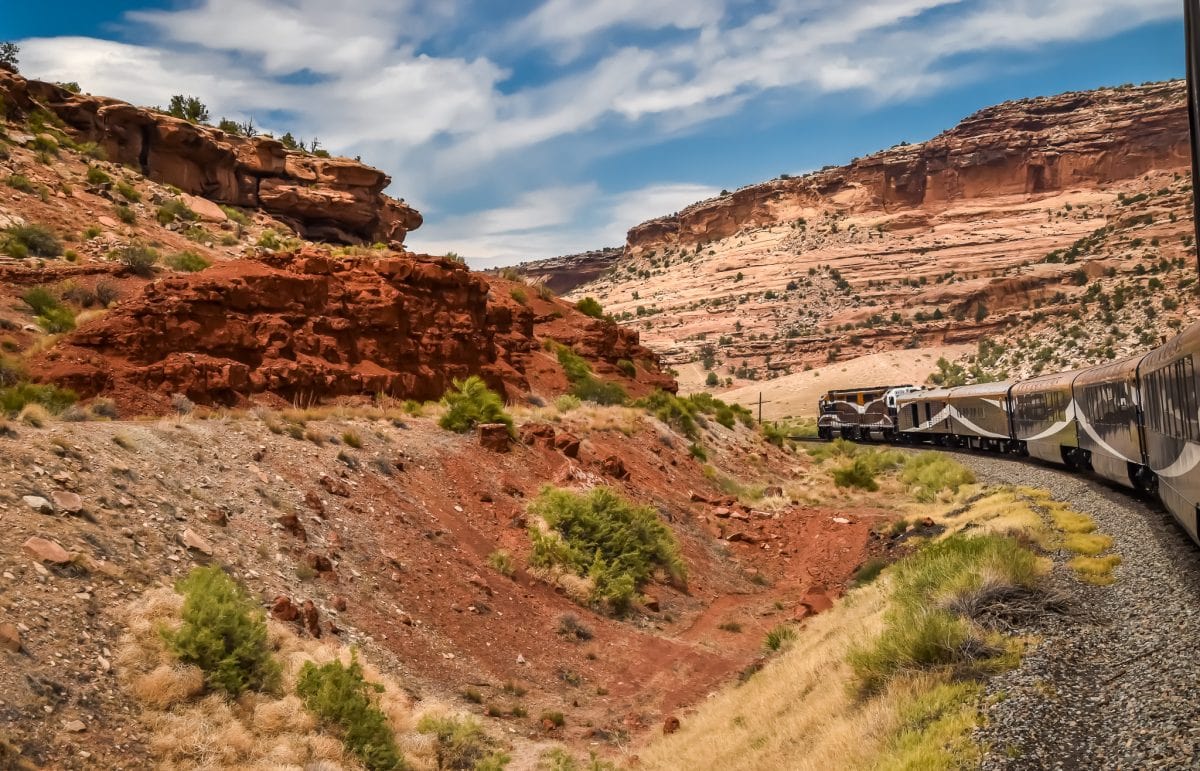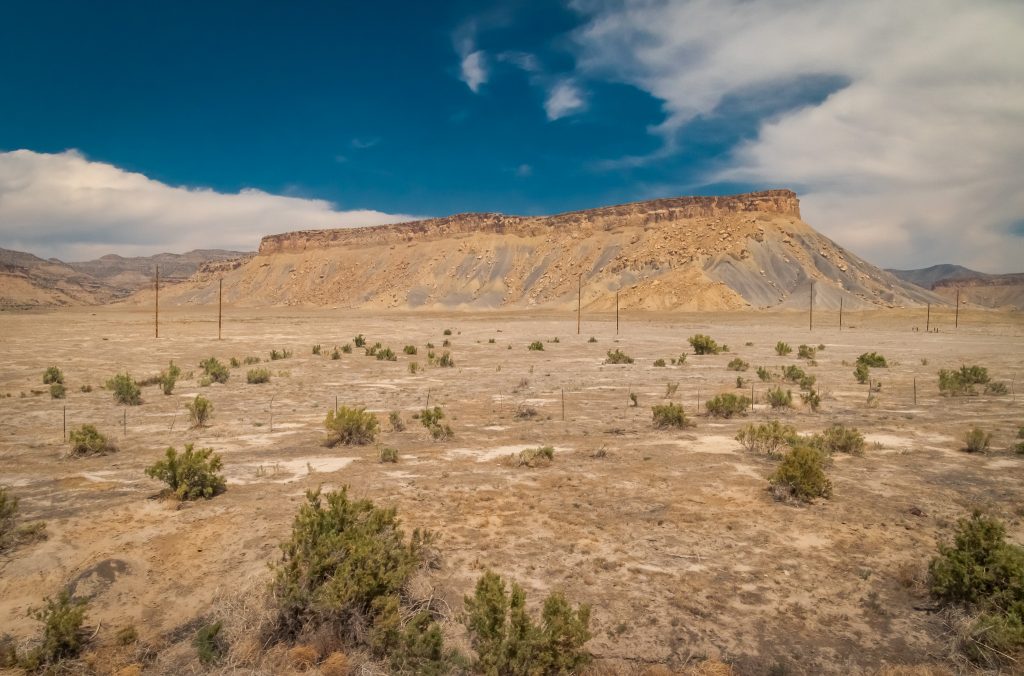Last Updated on 10/27/25 by Rose Palmer
Along with cruising, traveling by train is one of my favorite ways to see the world, especially if it is a luxury train experience. I’ve been on the Venice-Simplon Orient Express from Venice to Paris, the British Pullman in the UK, and the Andean Explorer and Hiram Bingham trains in Peru, and they have all been memorable journeys.
I was thrilled to have the opportunity to experience the new luxury US Canyon Spirit train route from Salt Lake City to Denver, where I enjoyed impeccable service along with regionally inspired dining while taking in the varied landscapes of the southwest.

Located 90 minutes north of Salt Lake City, the Golden Spike National Historic Park celebrates the completion of the first Transcontinental Railway on May 10, 1869. The following 50 years were the golden age of train travel in the US, as this new and improved method of transportation changed the “Great American Desert” east of the Rocky Mountains to the “Great Bread Basket” of the US.
Train travel may no longer be as popular in America, but one company is looking to change that. The Armstrong Collective, owners of the famous Canadian luxury train line Rocky Mountaineer, is expanding their train journeys in the US and rebranding the US experience to the aptly named Canyon Spirit.
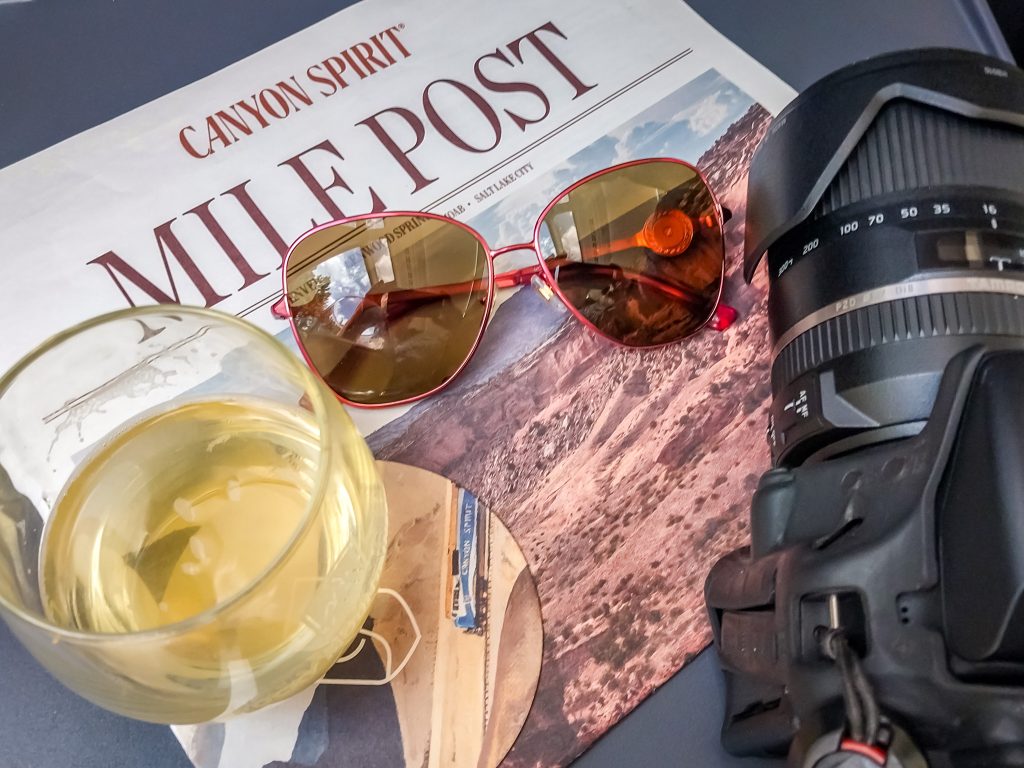
In 2021, the Armstrong Collective introduced a 2 day Rockies to the Red Rocks luxury itinerary that ran from Denver, Colorado, to Moab, Utah, and back. Building upon that success, a 3 day itinerary is being offered starting in 2026, which begins in Salt Lake City and ends in Denver (or vice versa).
I was fortunate to experience the inaugural preview run of this 3 day journey, and this review describes it all in lots of detail.
The Canyon Spirit train experience
Each day, we were warmly greeted by the train staff with a literal red carpet. The Canyon Spirit is made up of 7 specially designed passenger cars, which seat up to 54 guests per car. There were also two crew cars, a generator car, and, of course, the locomotive.
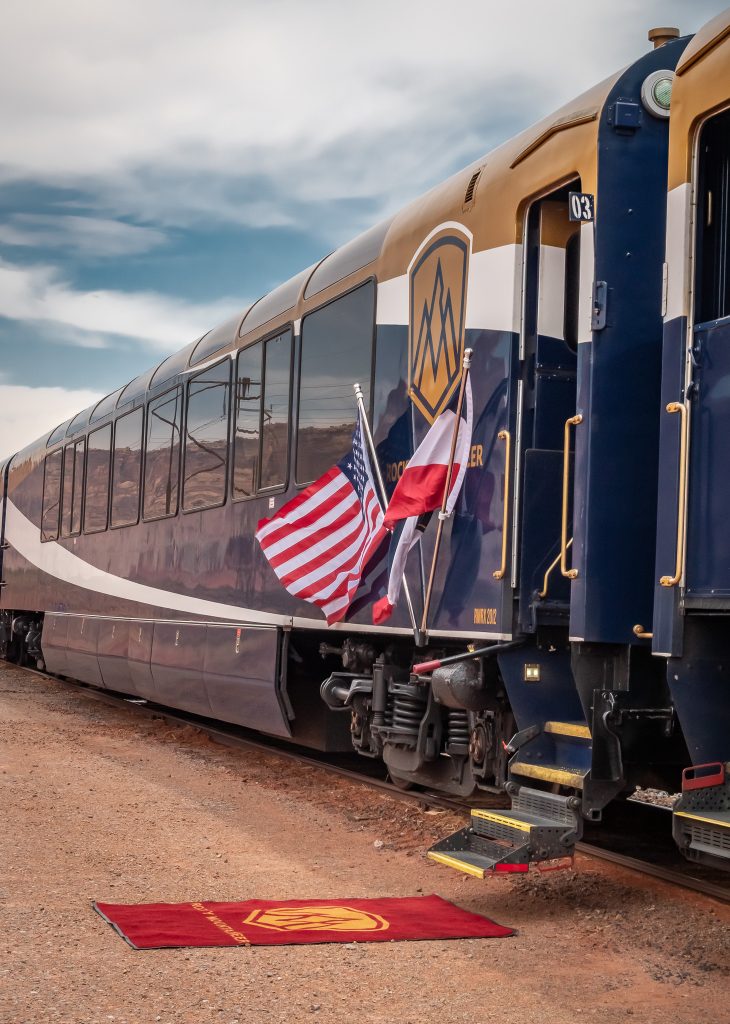
Originally, the coaches were sleeper cars built in the 1950s in Canada. They were rebuilt in 2012 and turned into panoramic viewing cars with glass domes and comfortable leather seats. The seats reclined and also swiveled so that guests were always facing forward, an important feature for those prone to motion sickness.

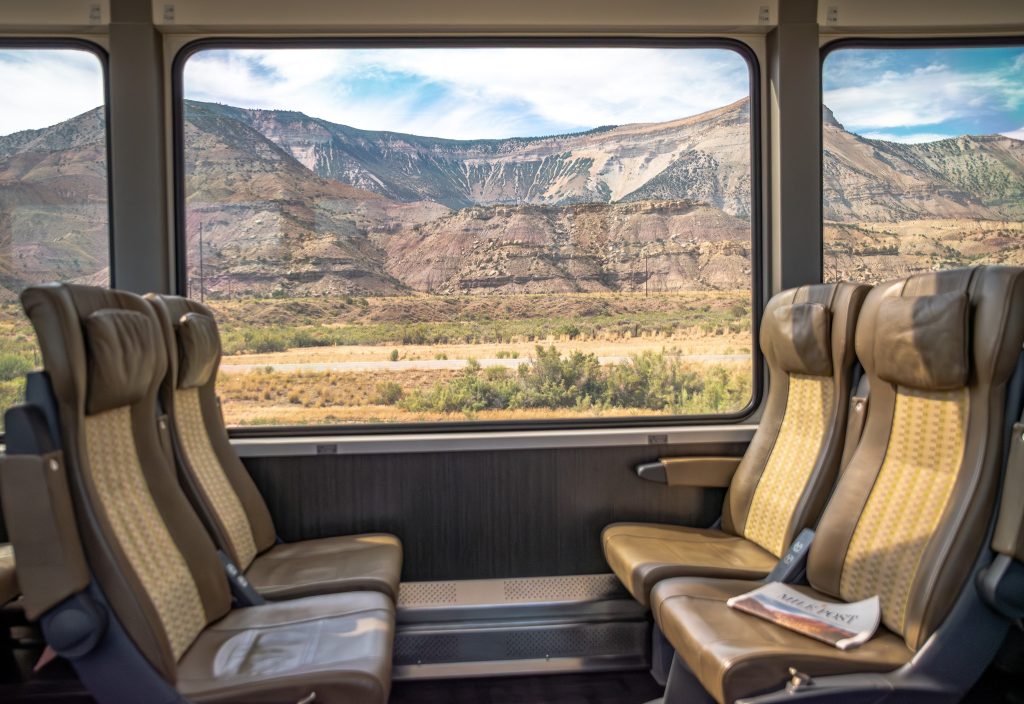
At the end of each car, a small outdoor viewing platform provided the option to take photos without the glass barrier. As a photographer, I found this especially appealing. However, this limited space was very popular when we passed through the scenic highlights.

There were also two lounge coaches available for those booked on the Premier package. The lounge cars offered additional options for comfortable seating while sipping bespoke cocktails or nibbling on gourmet snacks.
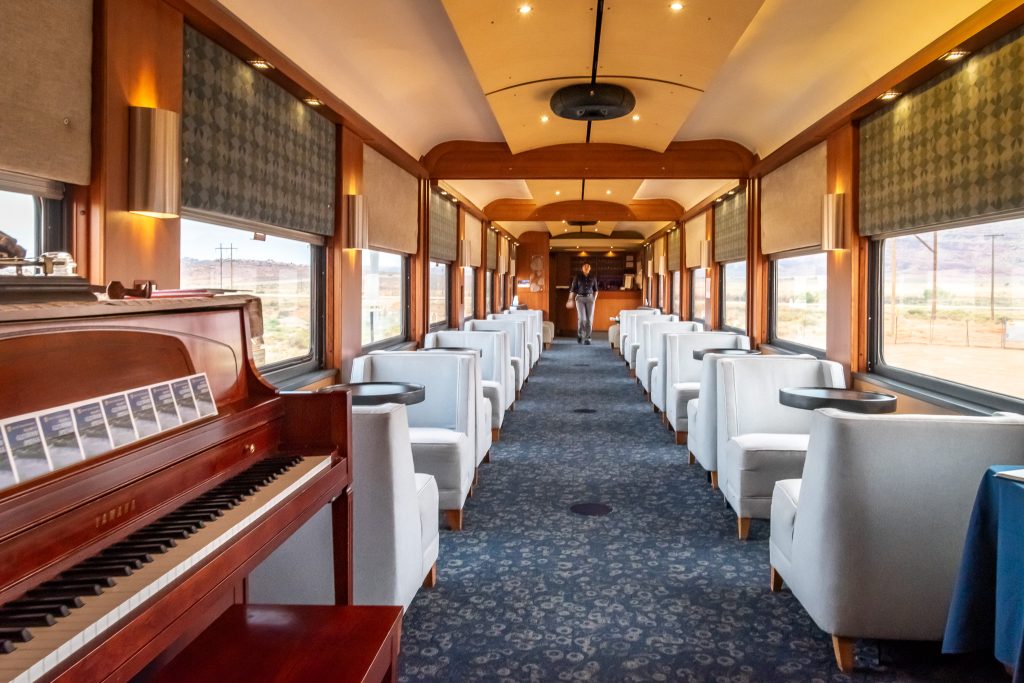


The train traveled only during daylight hours, ensuring that we didn’t miss any of the scenery along the route. Overnight accommodations on train days are included in the Signature fare package. Accommodations with partner hotels at the beginning and end of each journey could also be arranged.
The base fare Signature Canyon Spirit experience includes assigned seating in one of the coaches along with meals, snacks, and drinks served at each seat. The onboard dining menu featured local ingredients that showcased American Southwest flavors.
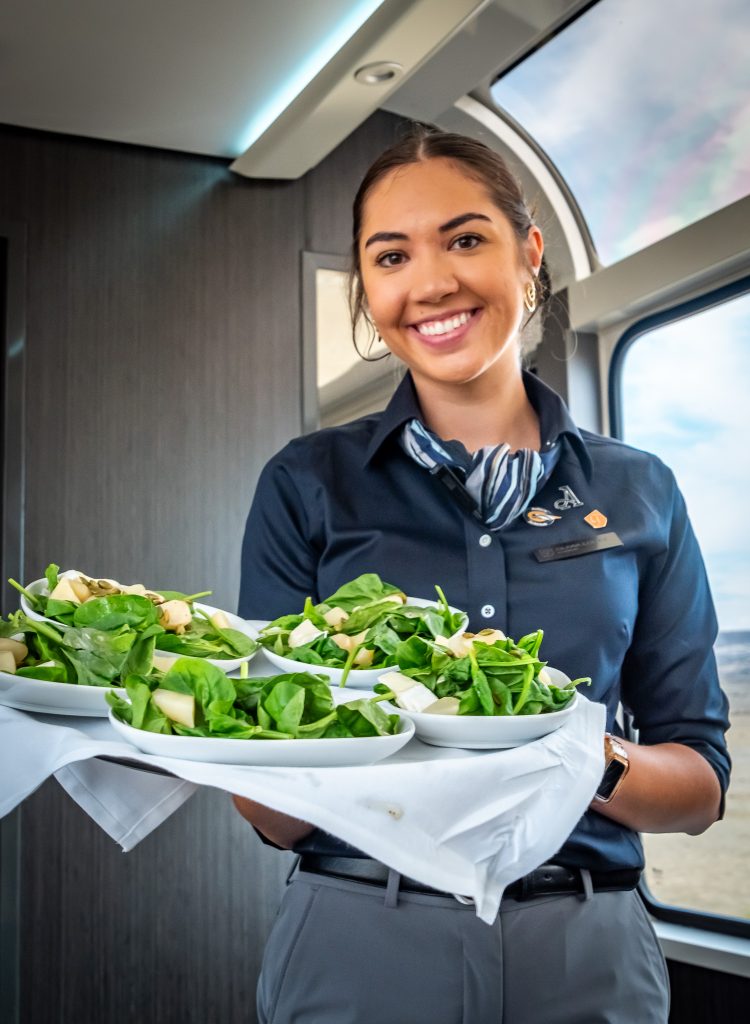
The Signature experience also includes transfers to and from hotels on train days, along with luggage delivery directly from one hotel to the next – no need to haul my bags to the train because they took care of it all.
I enjoyed the upgraded Premier Package, which built upon the Signature package to include access to lounge cars that provided signature cocktails and premium alcoholic beverages accompanied by gourmet snacks. There was also an elevated dining experience and an additional outdoor viewing space.
Note: for those familiar with the Rocky Mountaineer train experience, the equivalent of the GoldLeaf service was not available on the Canyon Spirit because a few of the tunnels are too low to accommodate the bilevel GoldLeaf cars.
Each car also has its own dedicated hosts who excel in storytelling. They shared facts about the sights, told enchanting tales of the local history, and described the ever changing geology along the route. They also expertly serve the food and drink without spilling a drop, despite the back and forth motion of the train.

In general, the Canyon Spirit travelled at an average speed of 35 miles per hour, a good speed to take in the views. As we passed through particularly scenic landscapes, the train slowed down so that we could enjoy the experience. Occasionally, the engineer would speed up in order to get the extra umph we needed to climb a steeper section.
(And yes, each train car also had large, clean bathroom facilities.)
My Canyon Spirit Review
Starting in Salt Lake City
After arriving in Salt Lake City in the late afternoon on the day before my train trip was to begin, a quick 10 minute Uber drive took me to the Grand American Hotel, one of the company’s partner accommodations. Decorated with English wool carpets and sparkling Venetian glass chandeliers, the interior had an old world European charm, despite being a modern hotel built in 2001.
My premier room on the 18th floor was larger than many NY City apartments, with a king bed and a separate sitting area that included large windows looking out over Salt Lake City’s downtown. Though traditionally decorated, modern amenities like USB ports by the bed were also present. The bathroom was equally spacious, with a big tub, a large sink area, and lots of marble.

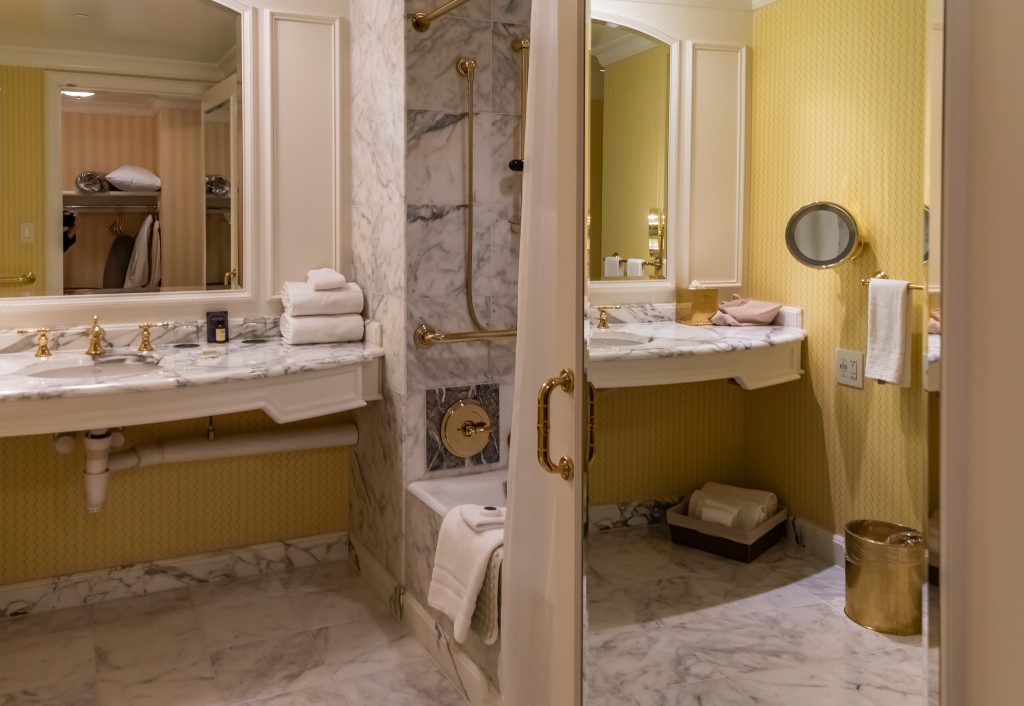
Since I arrived late, I didn’t have a chance to try the afternoon tea in the Lobby Lounge of the hotel, though the photos made it looked delicious. I also didn’t have time for either the indoor or outdoor pools (next time). I did, however, take time for a lovely stroll in the evening dusk through the manicured gardens with their colorful flower beds and the many gurgling water features.
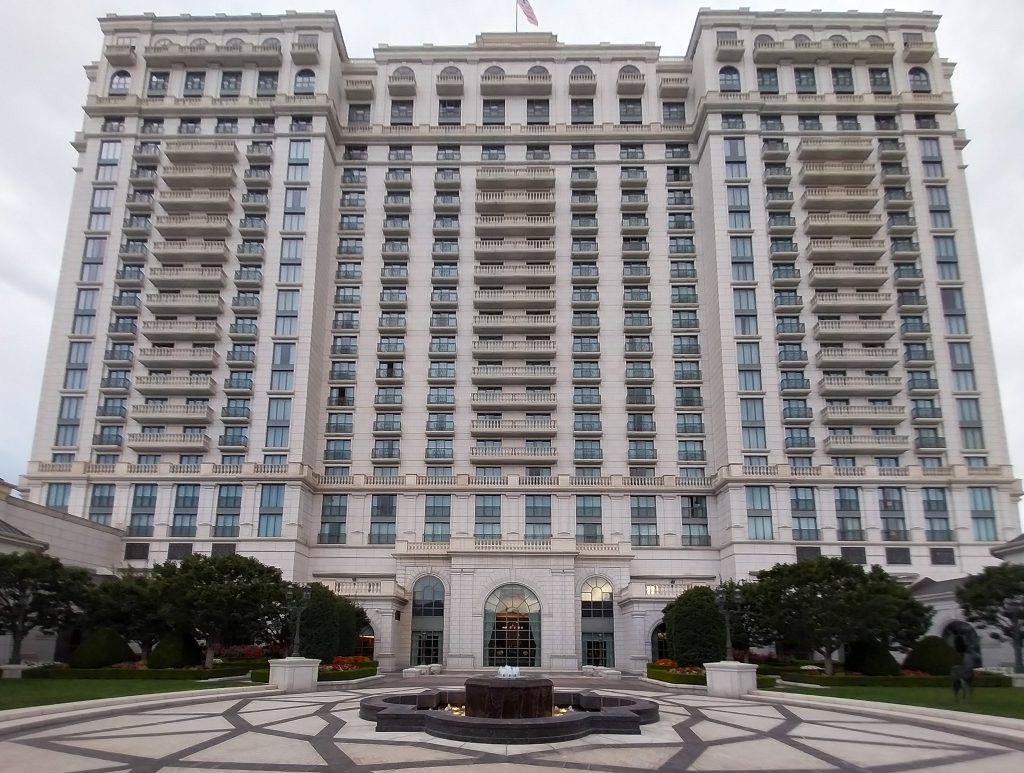

Another nearby accommodation option is the Asher Adams Hotel, a Marriott Autograph property, which incorporates the beautifully restored Union Pacific Depot. (Our media group enjoyed a welcome reception at this hotel).
Even if you are not staying there, it’s worth going to the Asher Adams Hotel for a meal or a drink just to admire the stained glass windows and oversized murals in the restored old train station lobby, the location of the hotel’s bar and restaurant.

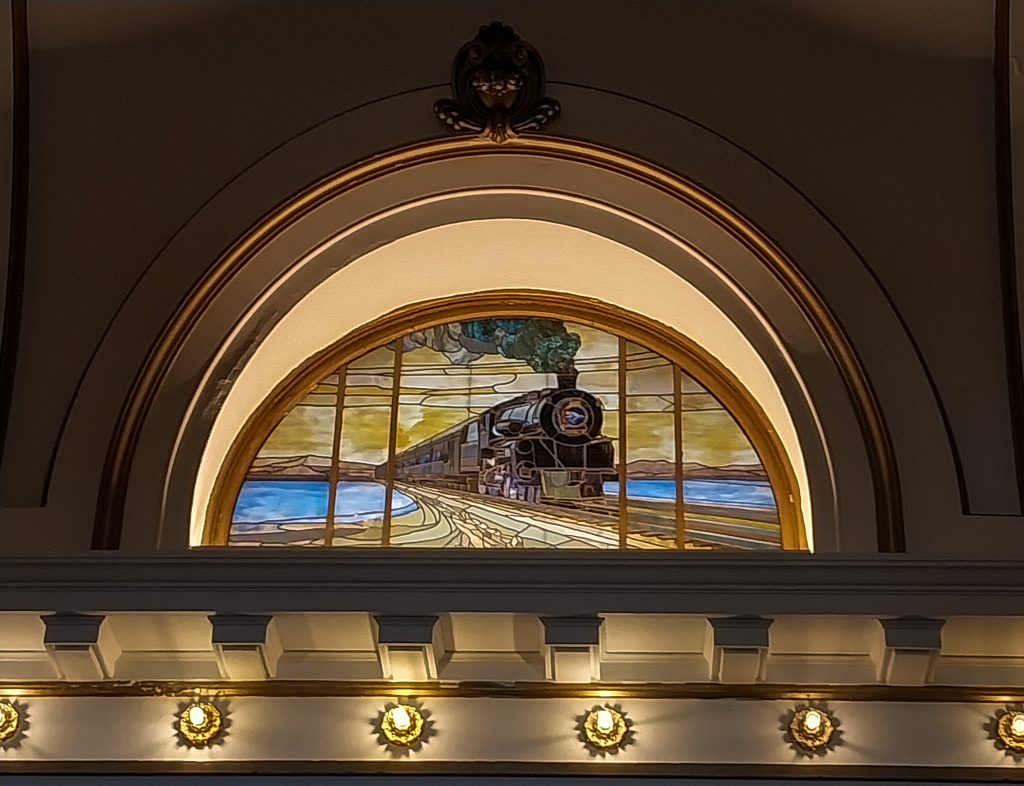
Alternatively, both hotels were within walking distance of a plethora of well rated restaurants that offered a variety of global cuisine choices for dinner.
Day 1 on the Canyon Spirit – Salt Lake City, Utah to Moab, Utah
My train experience
The day started early as we were picked up and transferred by a coach bus to our Canyon Spirit train car. I will admit that I was just a little anxious as I left my luggage in my hotel room. Canyon Spirit staff would pick up my suitcase and transport it to Moab, where it would be waiting for me in my hotel room at the end of the day.
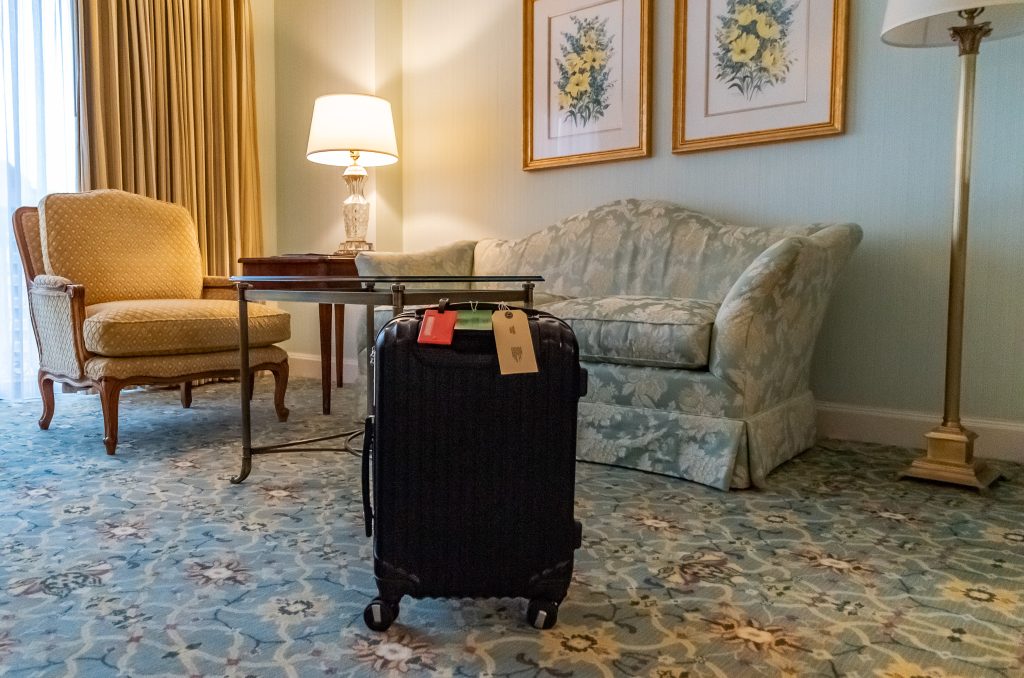
Since the train cars had large panoramic windows, there was no overhead storage space for my usual travel backpack, so my small carry-on bag had to fit under the seat at my feet. I made sure to pack with me any medications that I needed during the day, my camera and spare batteries, and of course, my phone.
We began boarding at 8 AM, and not long after, we were on our way! The crew started with introductions and a cultural acknowledgement to the indigenous nations of Utah and Colorado, as well as their lands through which we would be traveling.
For the first hour, we passed through the metropolitan scenery of Salt Lake City and Provo. It didn’t matter that the landscape was uninspiring because our hosts started quickly plying us with food and drinks.
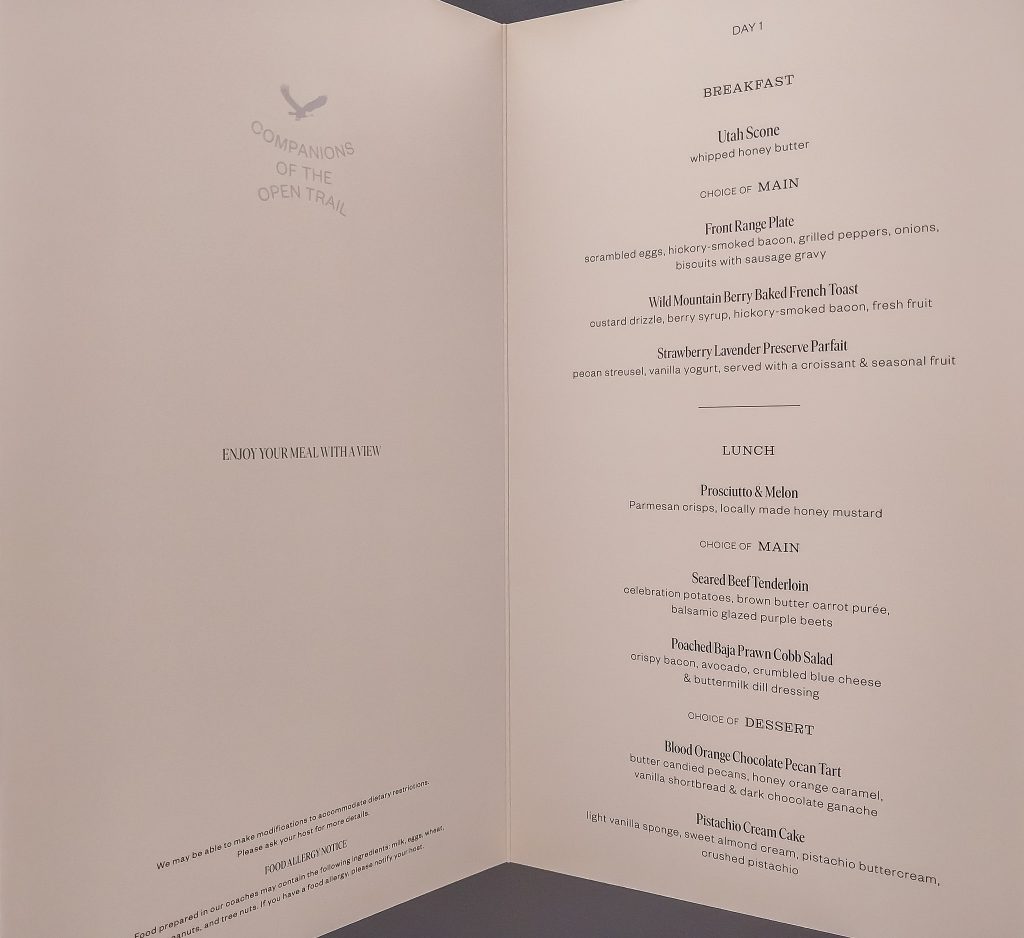
The service began with mimosas, which we used to toast new friendships and new experiences. All food and drinks were served at our seats (much like on a plane) with fresh table linens laid down at the beginning of each service.

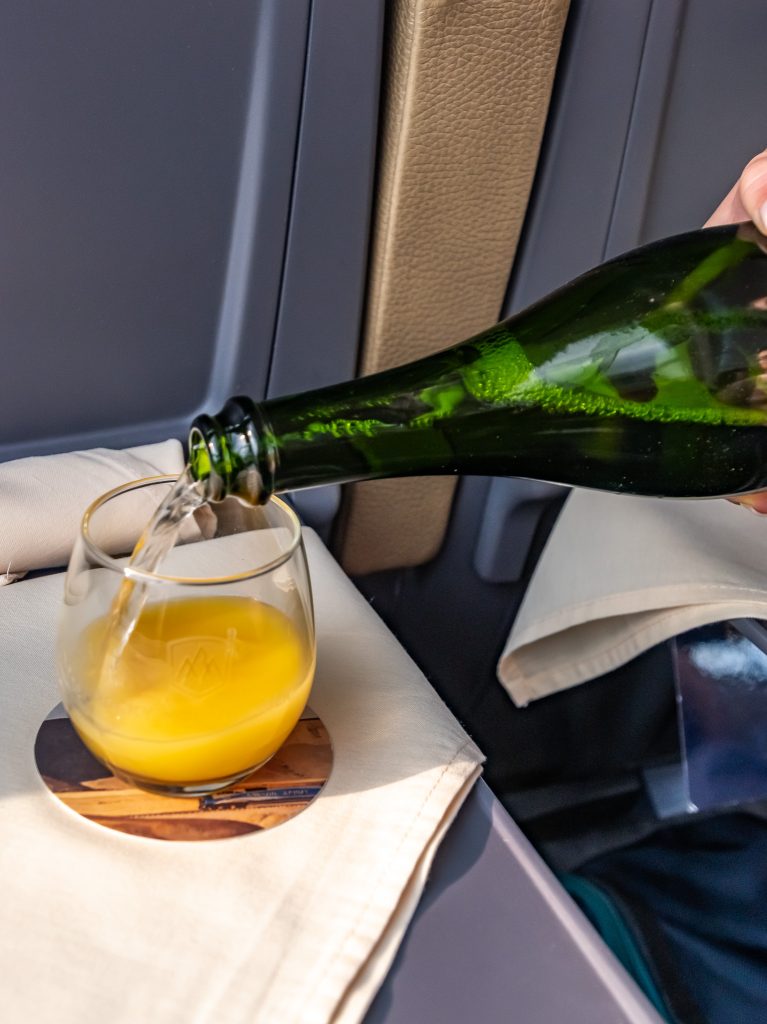
A warm scone served with honey butter (most appropriate since we were in the Beehive State), and a cup of tea or coffee were the breakfast prelude.
For the main course, I had the Wild Mountain Berry Baked French Toast served with a custard drizzle, berry syrup, hickory-smoked bacon, and fresh fruit. The Strawberry Lavender Preserve Yogurt Parfait sounded appetising as well.
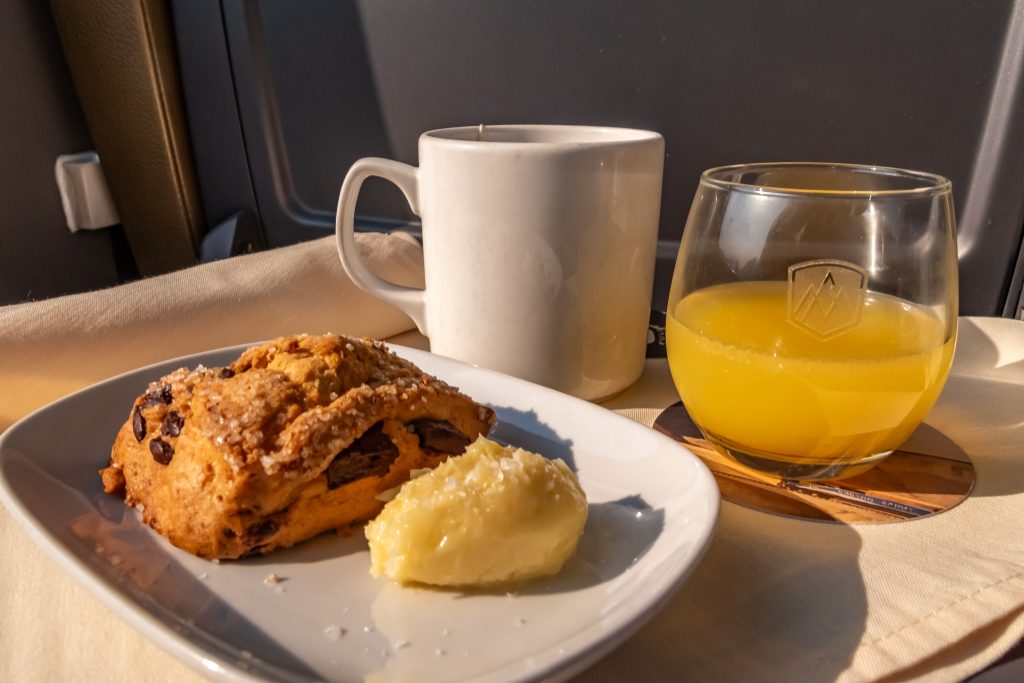
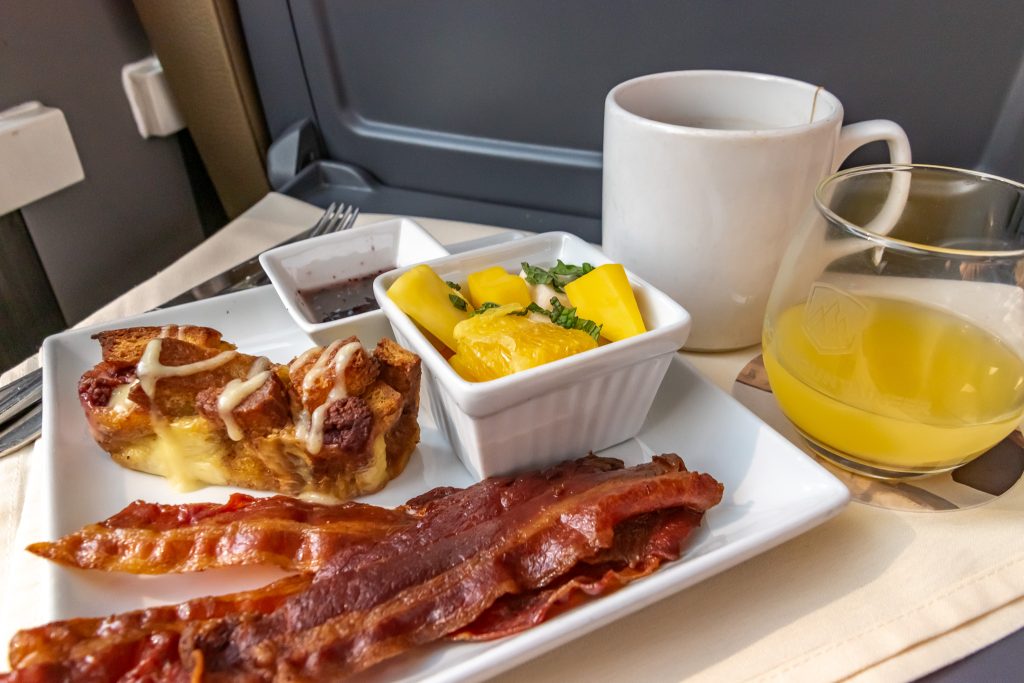
As I enjoyed my meal, the scenery continued to change. City views gave way to sagebrush covered hills and secluded valleys. We began the climb towards Soldier Summit and passed through the Gilluly Loops, a series of horseshoe shaped curves that gradually took us to the top. We were following the Grand Army of the Republic Highway, or RT 6, the longest transcontinental highway in the US (which also happens to pass through my home state of Pennsylvania).
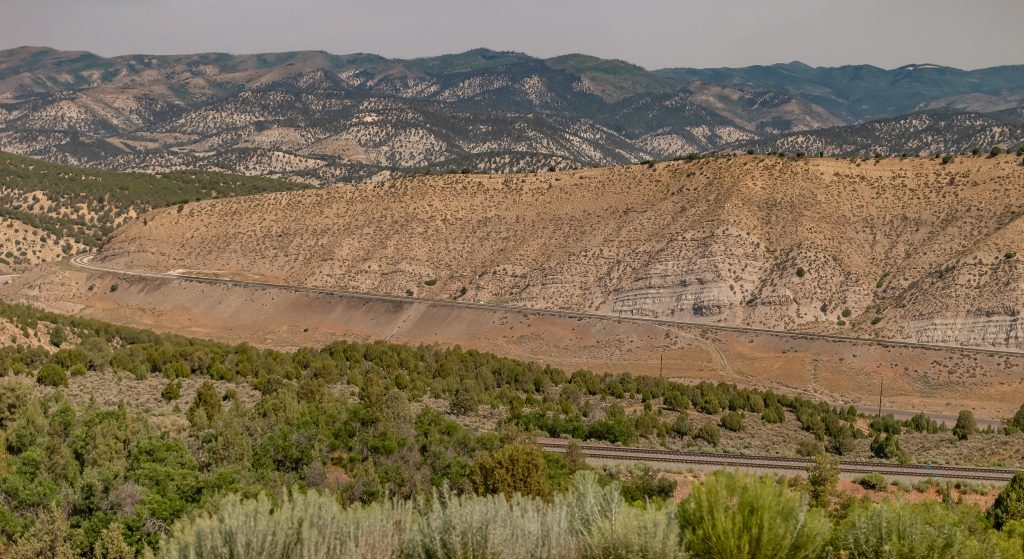
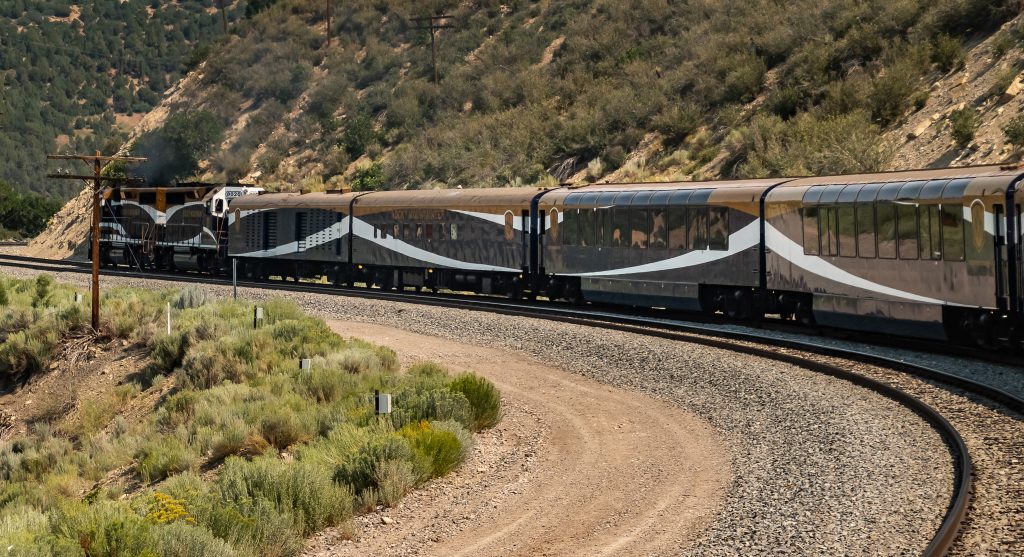
The hills became steeper, and the landscape drier, but the train tracks and the road paralleled the Price River, which provided a vital liquid lifeline for the local ranchers and communities.


One rock formation, Castle Gate, was especially striking. We learned from our hosts that the nearby town of Castle Gate (which is now a ghost town) was the site of a daring Butch Cassidy robbery in 1897 in which he stole a $7000 payroll off a train in broad daylight. It is said that the night before his robbery, Butch Cassidy stayed in the neighboring town of Helper, which we also passed through.
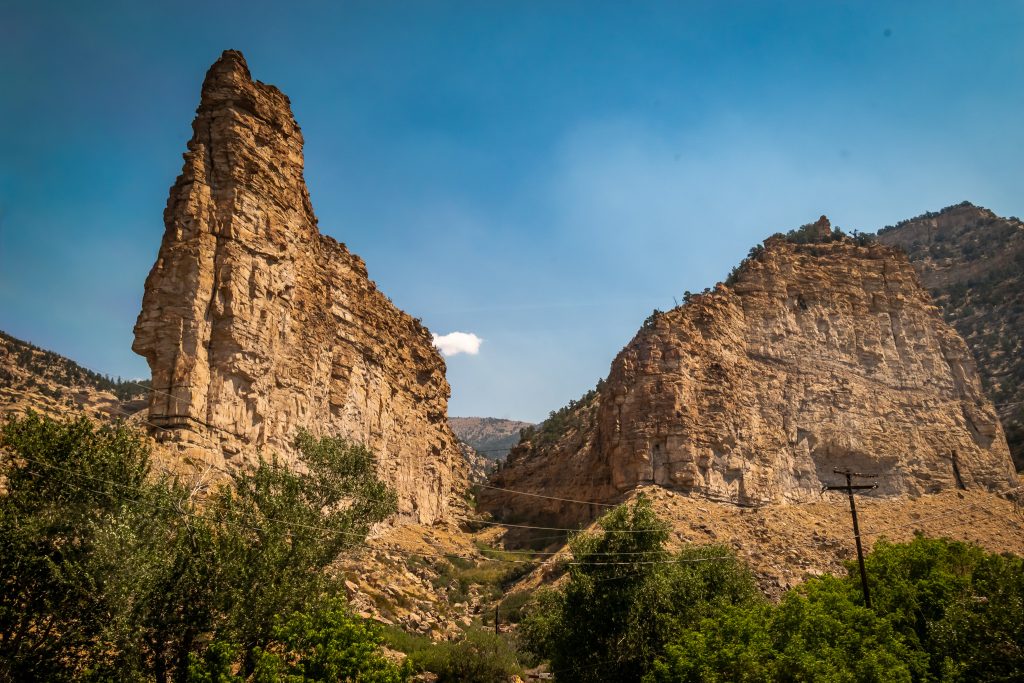
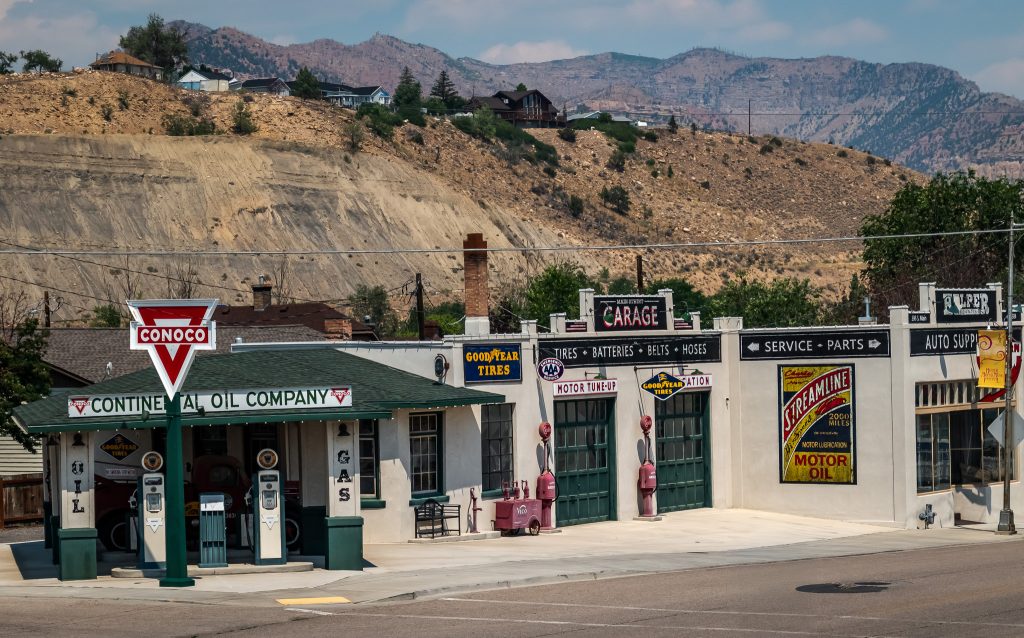
Before I knew it, 3 hours had passed, and it was time for lunch. Once again, the crew hustled as they served us a gourmet meal. For my main course, the Poached Baha Prawn Cobb Salad was a nice light option. Those who had the Seared Beef Tenderloin said it was also tasty. And the Blood Orange Chocolate Pecan Tart was absolutely divine, though I had a hard time deciding between the two dessert choices.

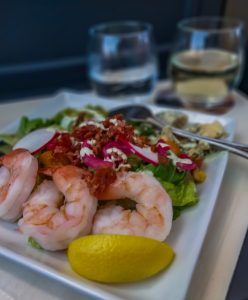

While I was indulging in lunch, the views outside my window also evolved as the desert landscape became more open and desolate, typical for this part of Utah.
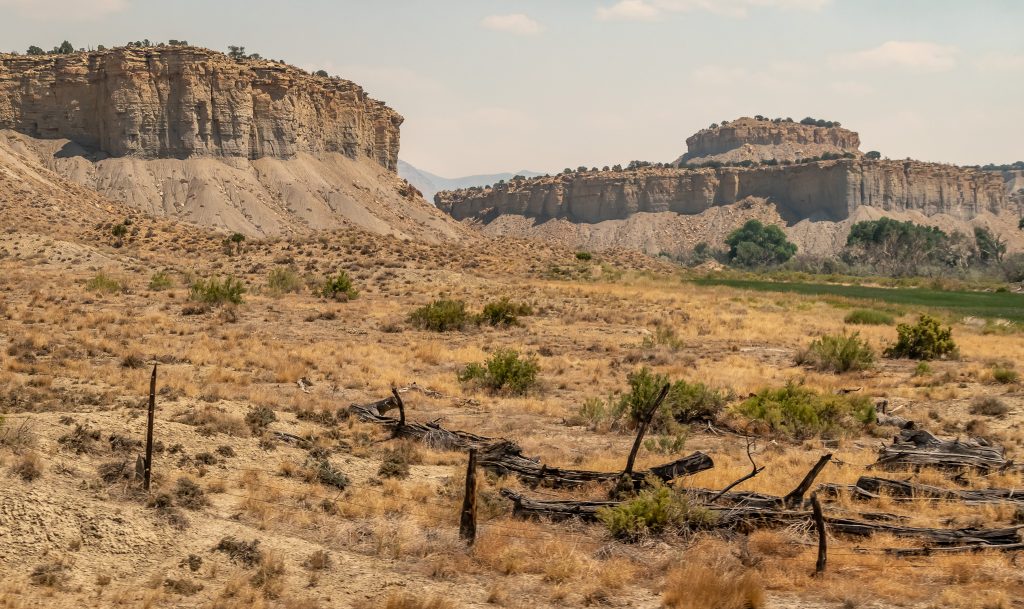
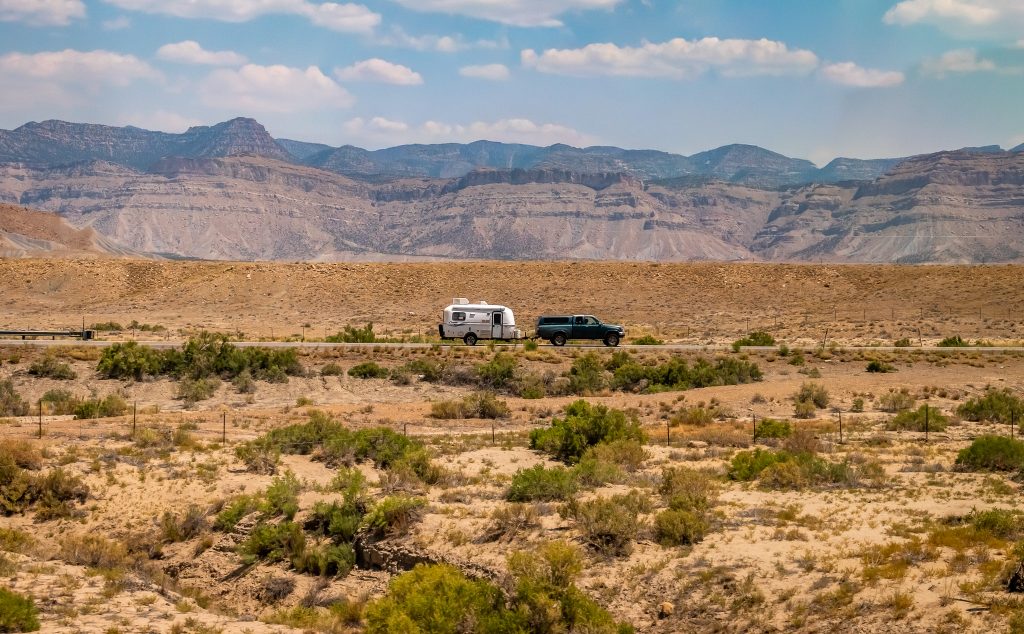
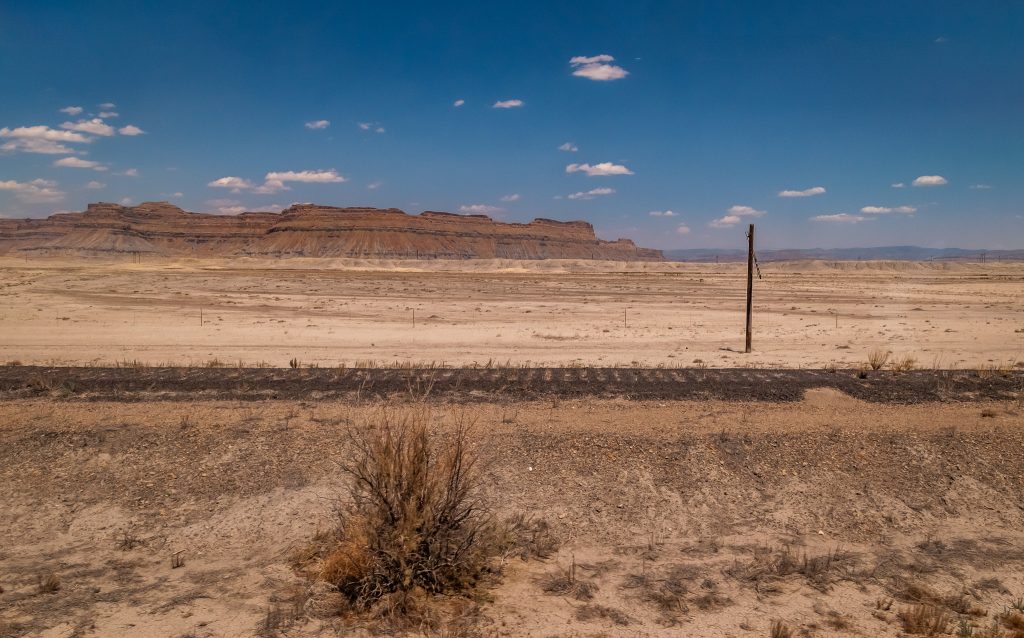
Once we crossed the Green River and began approaching Moab, the scenery changed yet again to large, wind-scoured mesas and buttes. This was but a prelude to what we would see in Arches National Park on the second day of our train journey.

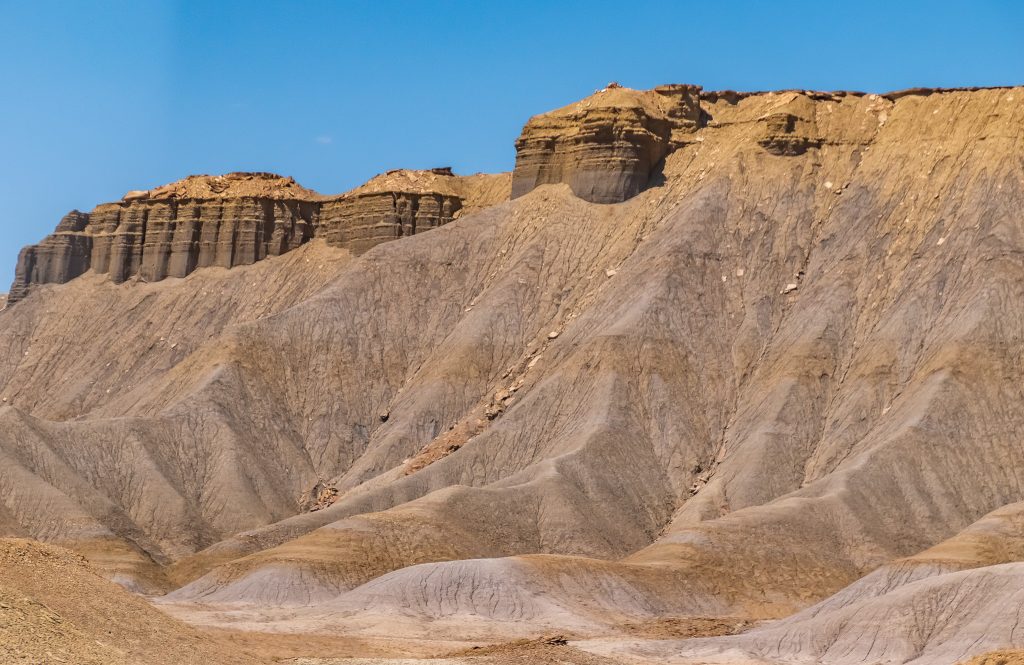
In Moab, Utah

Around 2:30 in the afternoon, we reached Moab, the gateway town for Arches and Canyonland National Parks. Since Moab doesn’t have a train station, we stopped on a siding where the Canyon Spirit ground staff were waiting with a warm welcome.
A 20 minute coach ride spirited us into town and our hotels for the night. Canyon Spirit partnered with two hotels in town: Hoodoo Moab Curio Collection by Hilton and Homewood Suites by Hilton, Moab.
Before getting off the train, we received our individual hotel room keys, which meant I could go straight up to my room without any additional wait time. My room at the Homewood Suites was large, clean, and had my suitcase waiting for me!
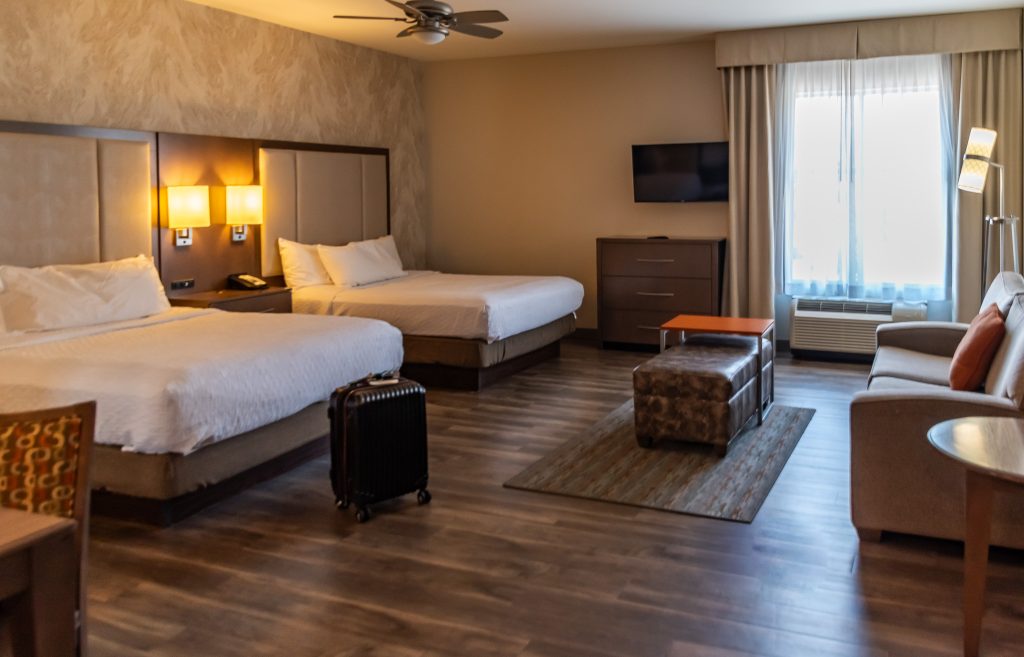

We arrived in Moab in the early afternoon, so there was plenty of time for some independent exploration. Sites like Get You Guide and Viator offered some interesting late afternoon and sunset tour options in the area.
Moab itself is small and was easy to explore without a car. Main Street had lots of cute shops and quite a variety of restaurant options for dinner. I had a fantastic meal at the Desert Bistro, known for an internationally inspired menu with a southwestern flair.
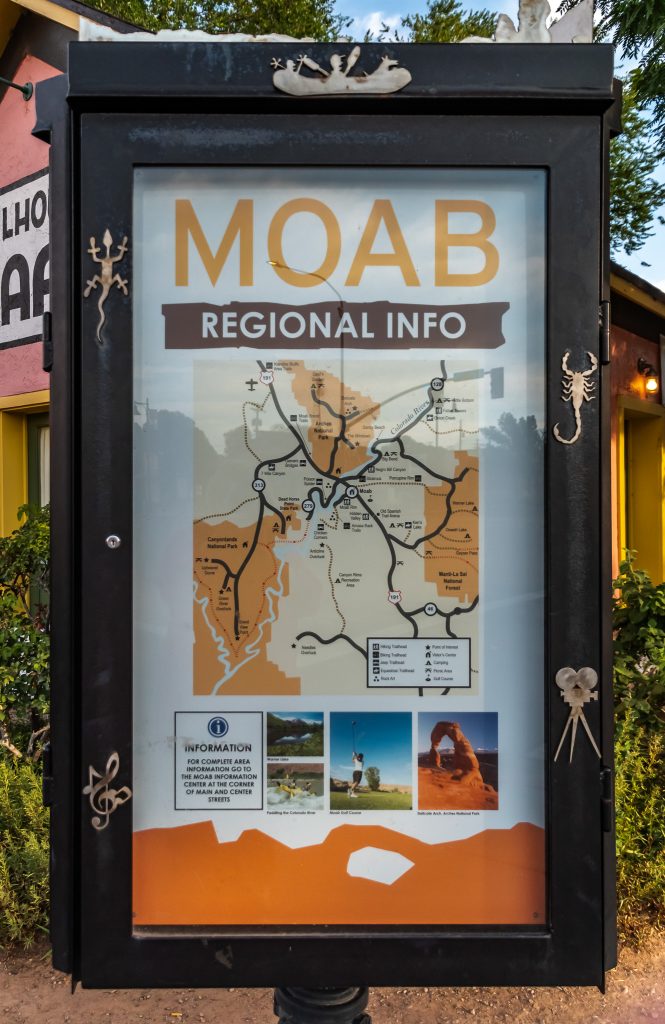
Day 2 on the Canyon Spirit – Moab, Utah to Glenwood Springs, Colorado
Touring Arches National Park
After a quick hotel breakfast, a bus picked us up for an 8 AM start to tour Arches National Park. Arches is one of my favorite national parks in the US, and I’ve visited many times, though never in the summer. An early morning start meant it wasn’t that hot – yet.
Arches National Park preserves over 3000 natural stone arches, but only a fraction are easily accessible. One of the most popular sections is the Windows arches, and this was our first stop before the site became too crowded and the temperatures too high.
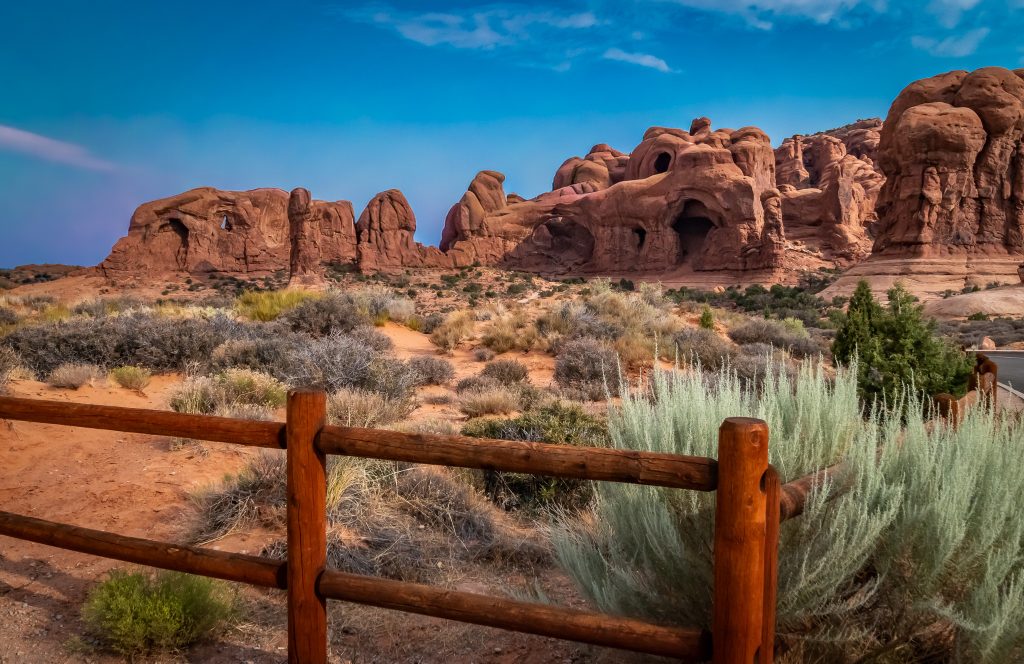

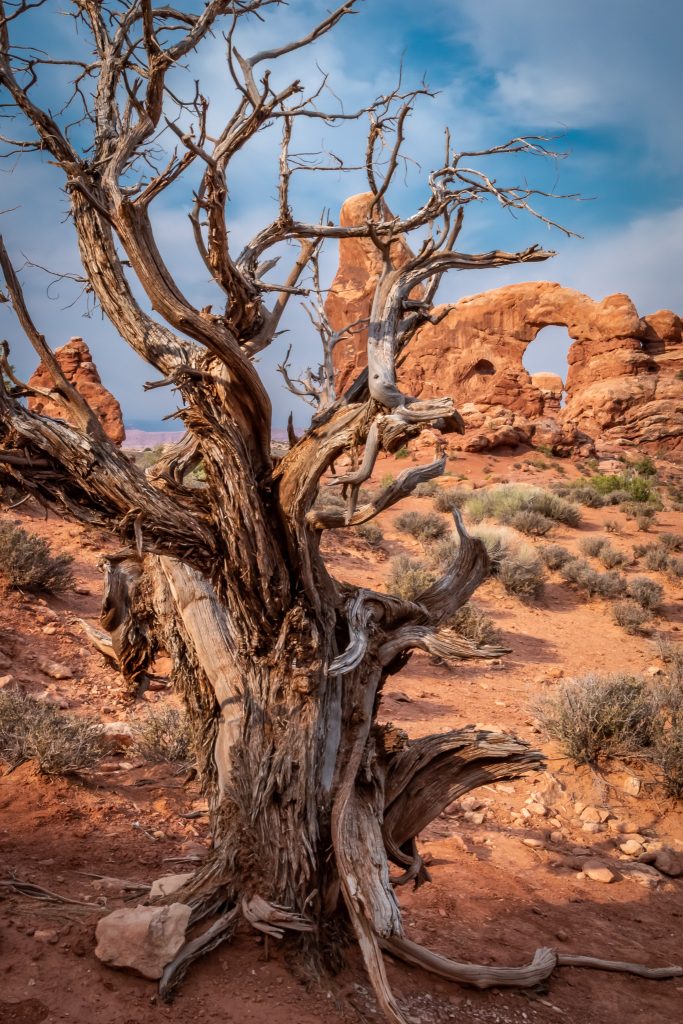
I think that some of the best scenery in the park is in the first few miles after the entrance, and this time it was nice to be able to enjoy the many unique rock formations while someone else was driving.
The Organ, The Courthouse Towers, and the Tower of Babel are some of the best known spires in the park. With time, water, and wind, nature has sculpted skyscrapers that rival the most impressive buildings in New York City.
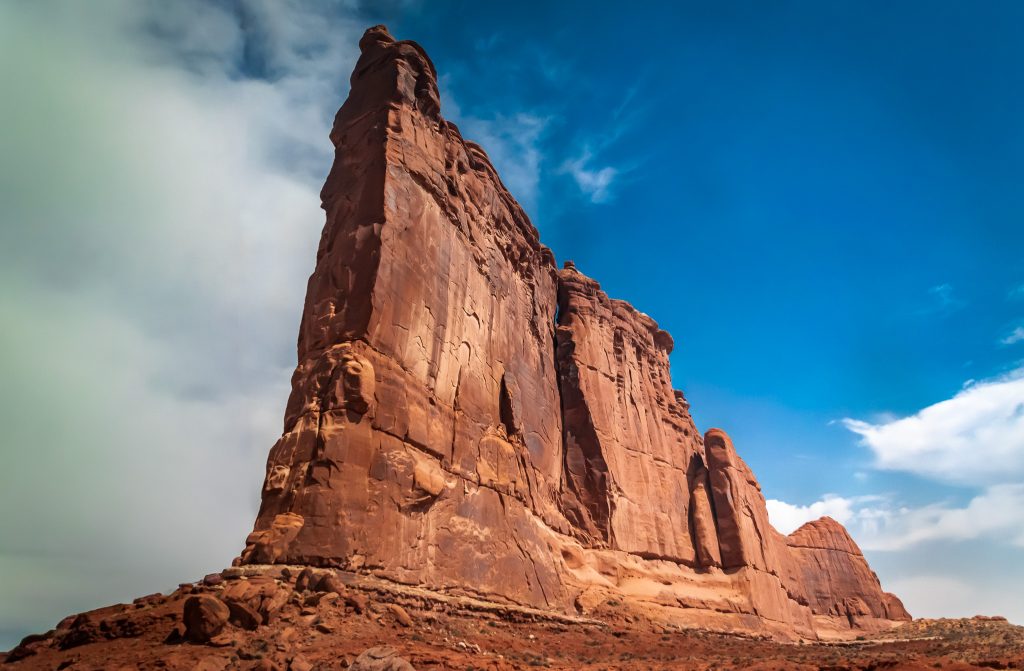

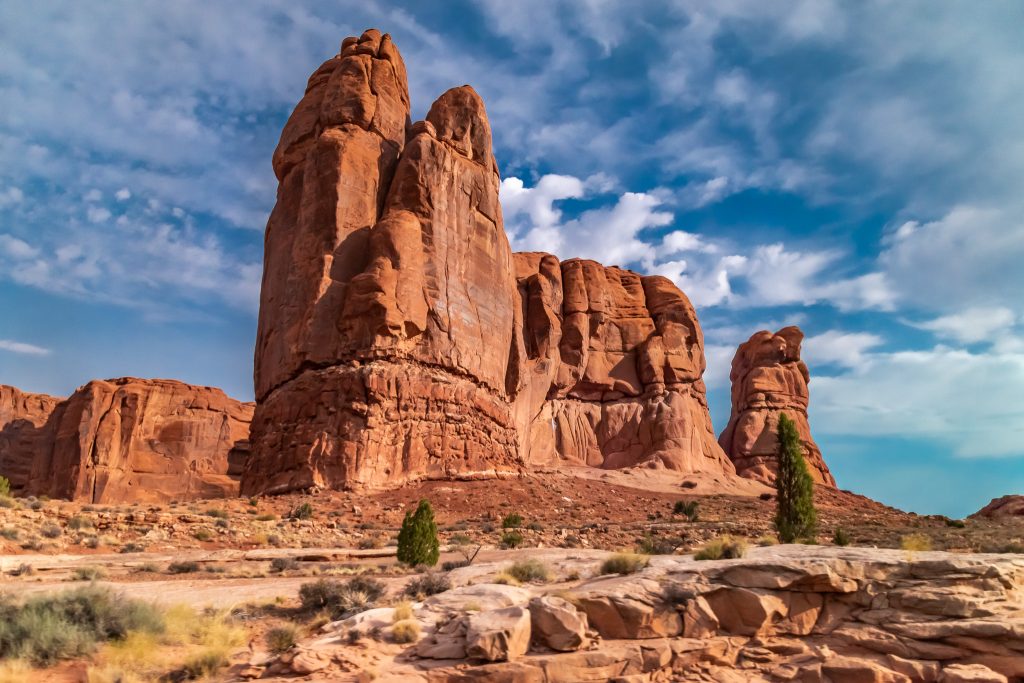
The Delicate Arch is the most famous in the park and is often seen in photos representing the state of Utah. Hiking to Delicate Arch is challenging, but other viewpoints are easier to get to. Our second stop was the Lower Delicate Arch viewpoint, where we had distant views of this famous landmark.
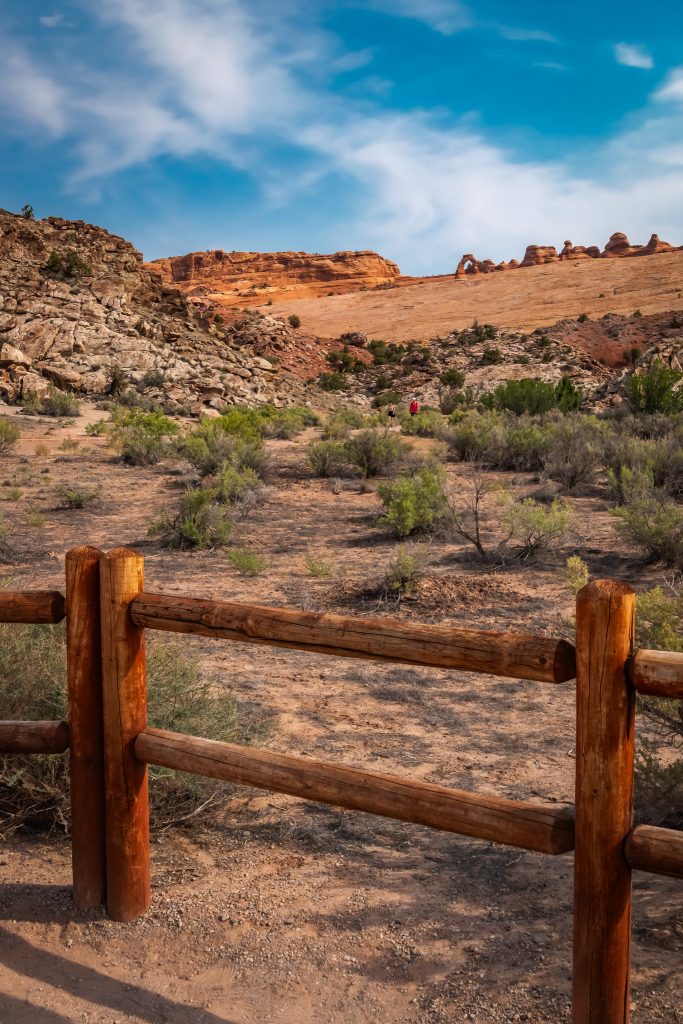
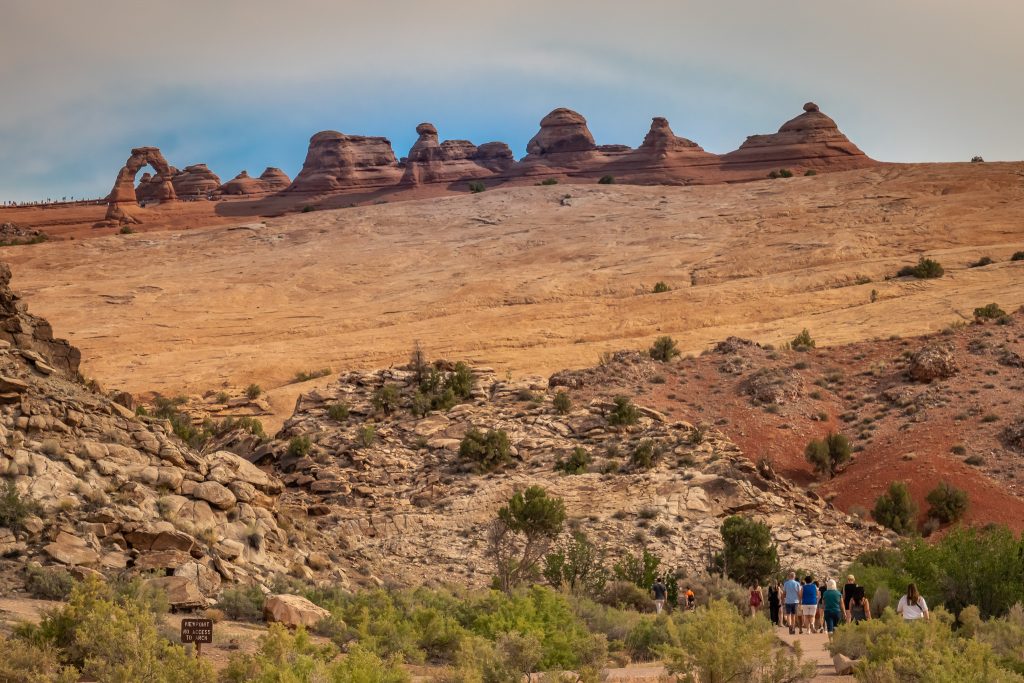
The final stop was at Balanced Rock, another famous and popular spot in the park. The trail around the Balanced Rock was easy and didn’t take long to walk.
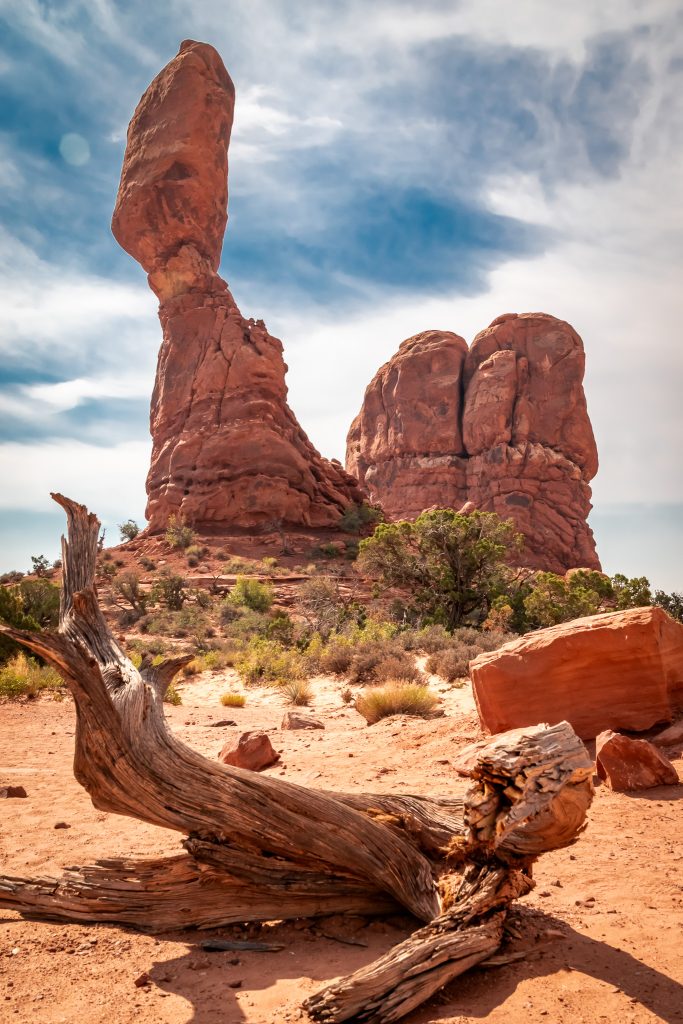
As the temperatures rose and the morning waned, so did our tour. The bus took us to nearby Thompson’s Springs, where the Canyon Spirit staff was waiting for us with big smiles and open arms.
My train experience
Again, the Canyon Spirit crew rolled out the red carpet as we boarded our coach. It was such a pleasure to be welcomed by familiar faces who were genuinely happy to see us.
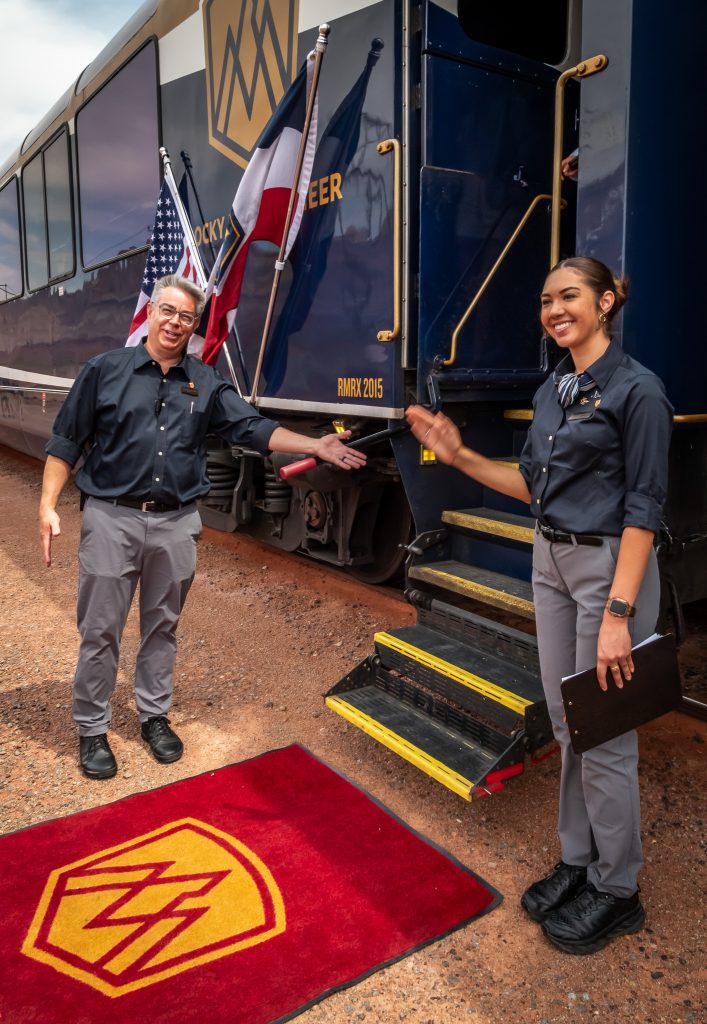
Once we got going, the staff served us another leisurely and delicious lunch. After the starter, a Spinach, Pear, and Brie Salad, I had the healthy Colorado Smoked Salmon Superfood Salad, featuring quinoa, apricot, and a lemon poppyseed dressing. And while both desserts sounded great, I couldn’t pass up the Dark Chocolate Mousse Torte.
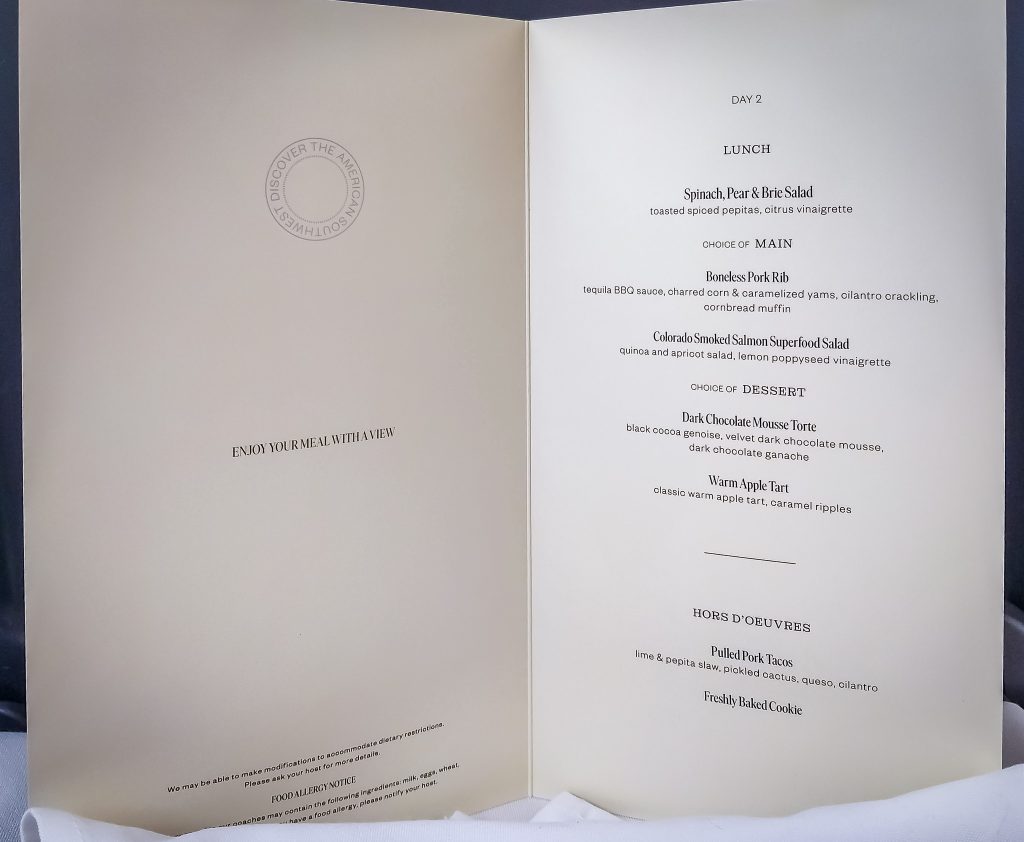
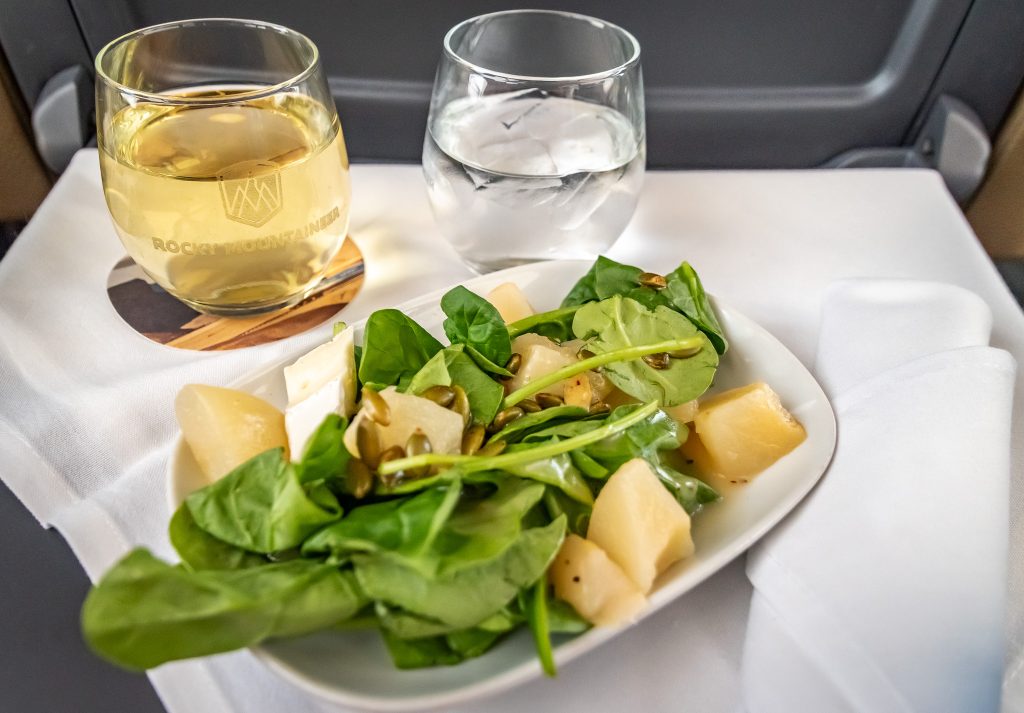
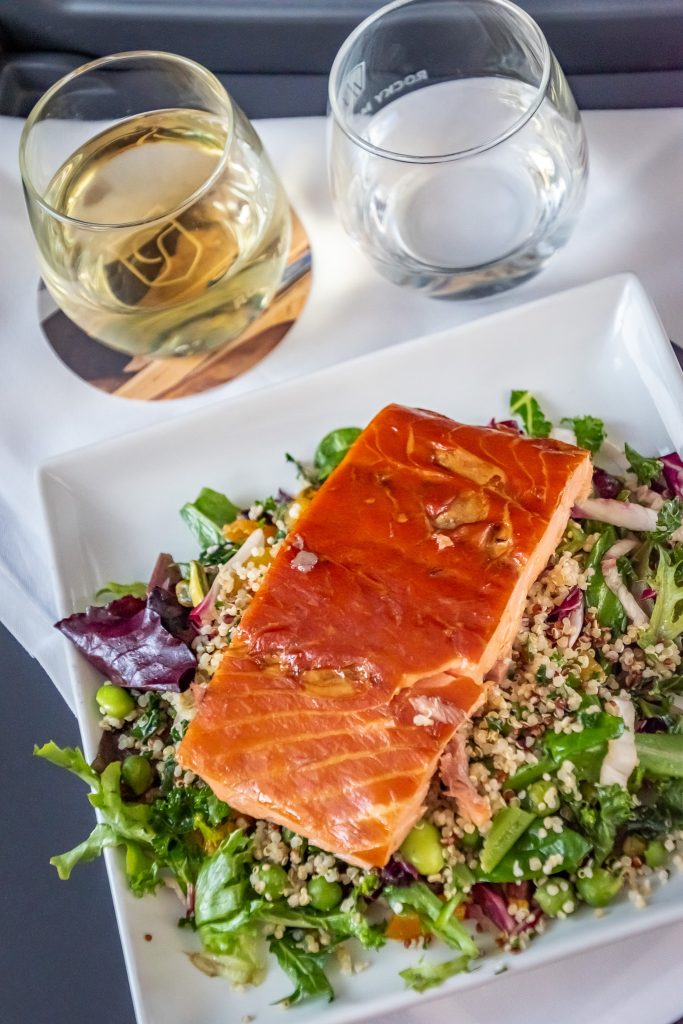
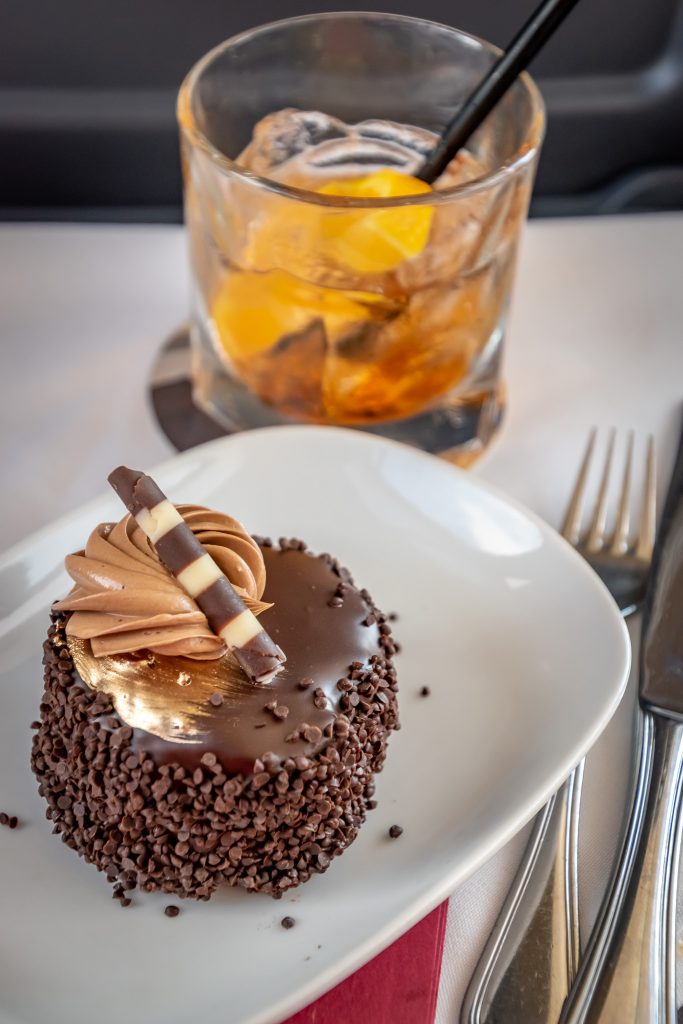
During lunch, the views transitioned from the distant La Salle mountains to dry High Desert scenery, typical of eastern Utah. On the way, we passed through the town of Cisco. Established in the 1880s as a railway service point, today it is a ghost town, abandoned after the interstate bypassed it in the 1970s.
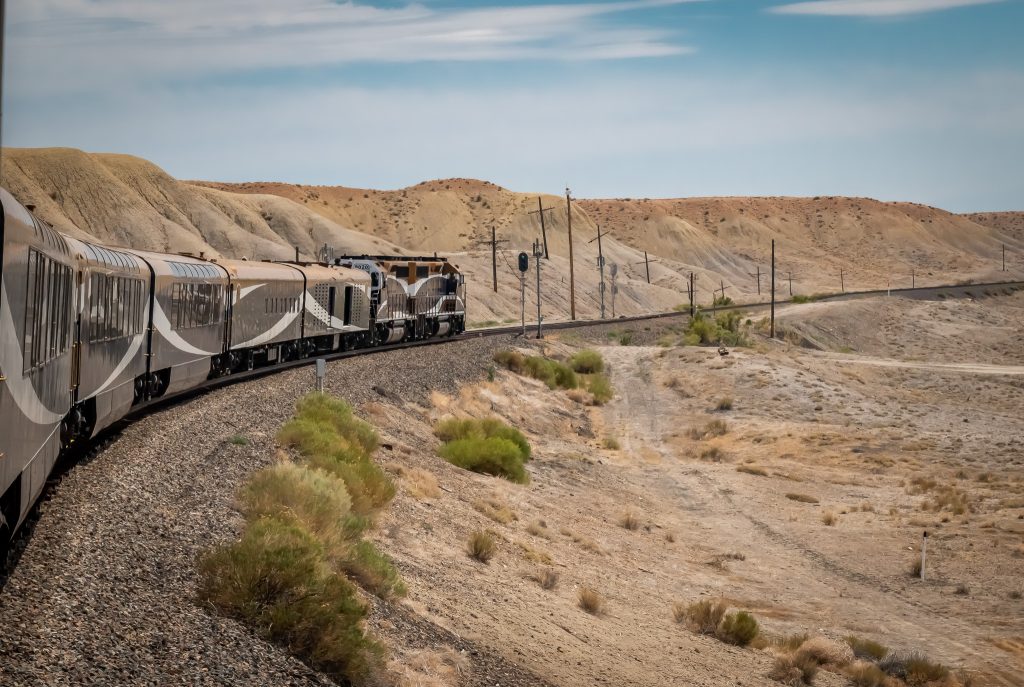

Just before the Utah-Colorado border, our tracks began paralleling the Colorado River. It was the height of summer, and many rafters were cooling off in the water. Our hosts informed us that there is a tradition on the Colorado River whereby rafters moon the trains as they pass by, though that wasn’t our experience this time.

The Utah-Colorado border also presented one of the highlights of the trip, Ruby Canyon. This 25 mile canyon can only be accessed by rafting down the Colorado River or via a train trip like ours.
We wound our way through the canyon, following the twists and turns of the river with wind sculpted sandstone cliffs surrounding us on both sides.
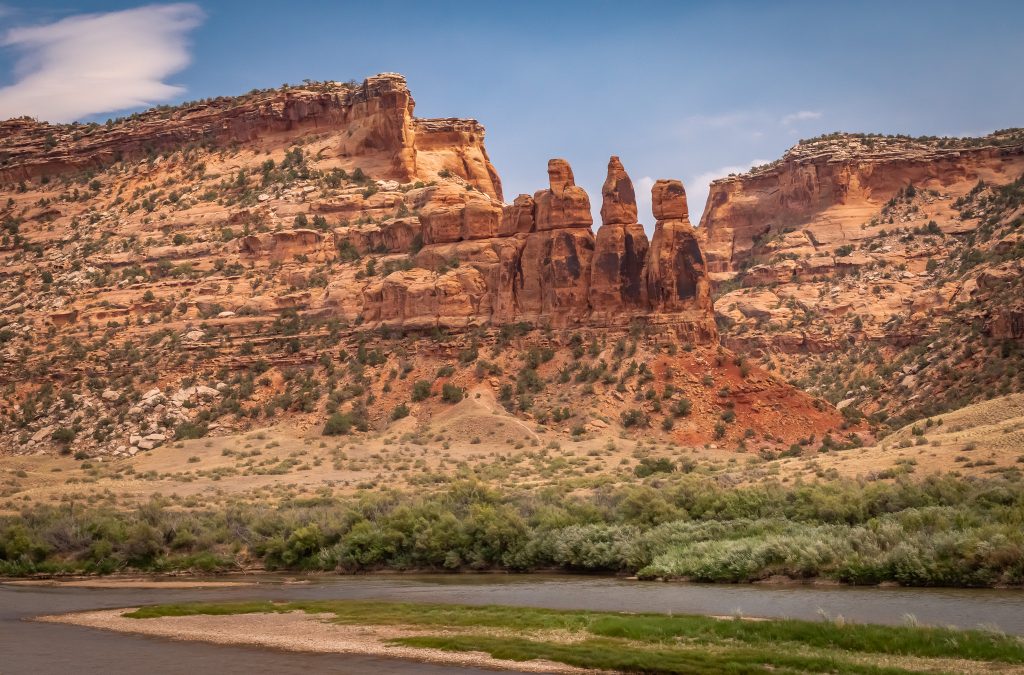

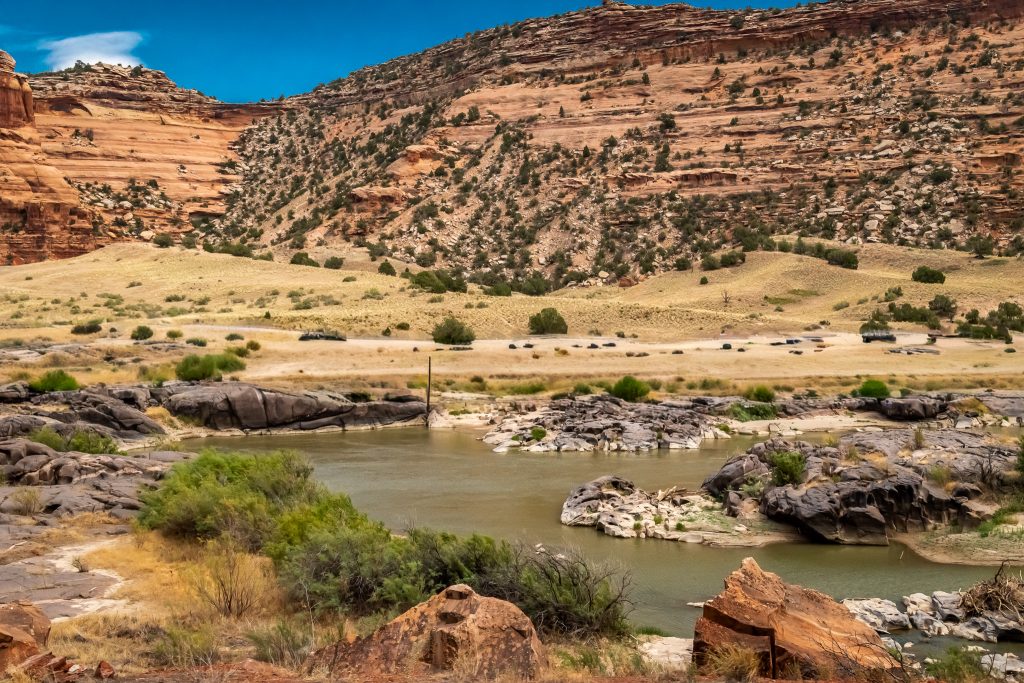

Leaving Ruby Canyon, we travelled through Grand Junction, Colorado, and the orchards and vineyards beyond. With Mt. Garfield on one side and Grand Mesa on the other, we were passing through Grand Valley, Colorado’s wine country.
The mountain terrain with its high desert climate and mineral rich soil is ideal for growing grapes, supporting 30 different wineries in the region. In fact, our train passed by the vineyard that grew the grapes for the Plum Creek Riesling that I was sipping with my lunch.
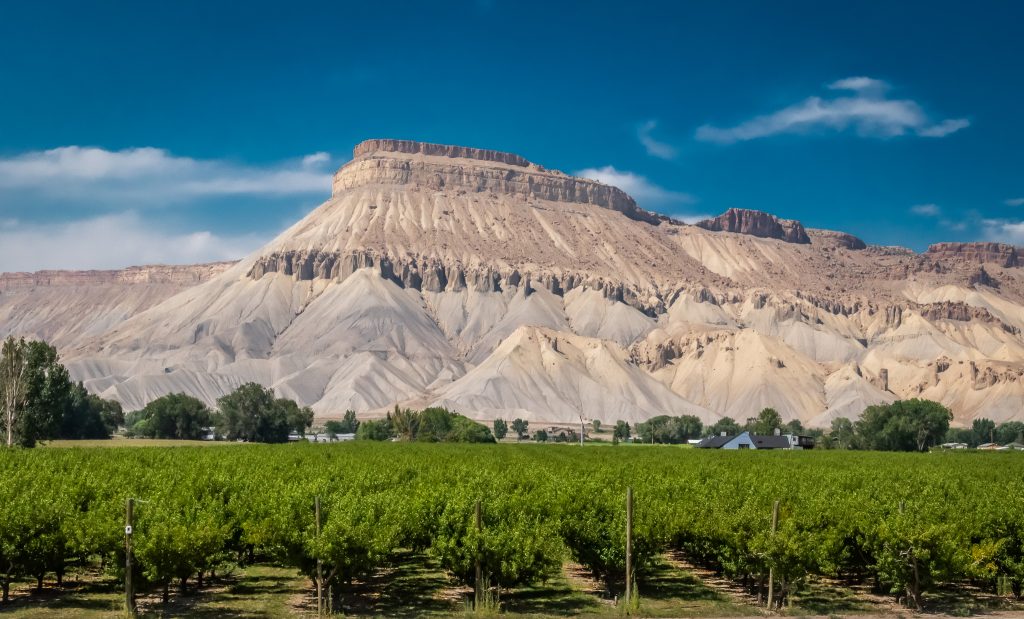
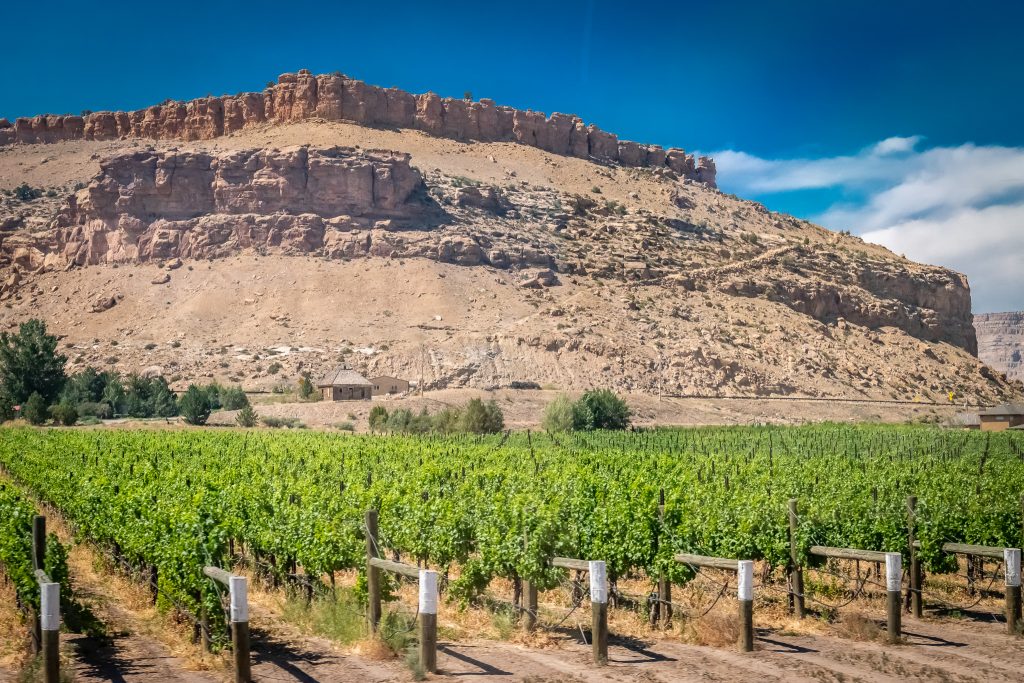
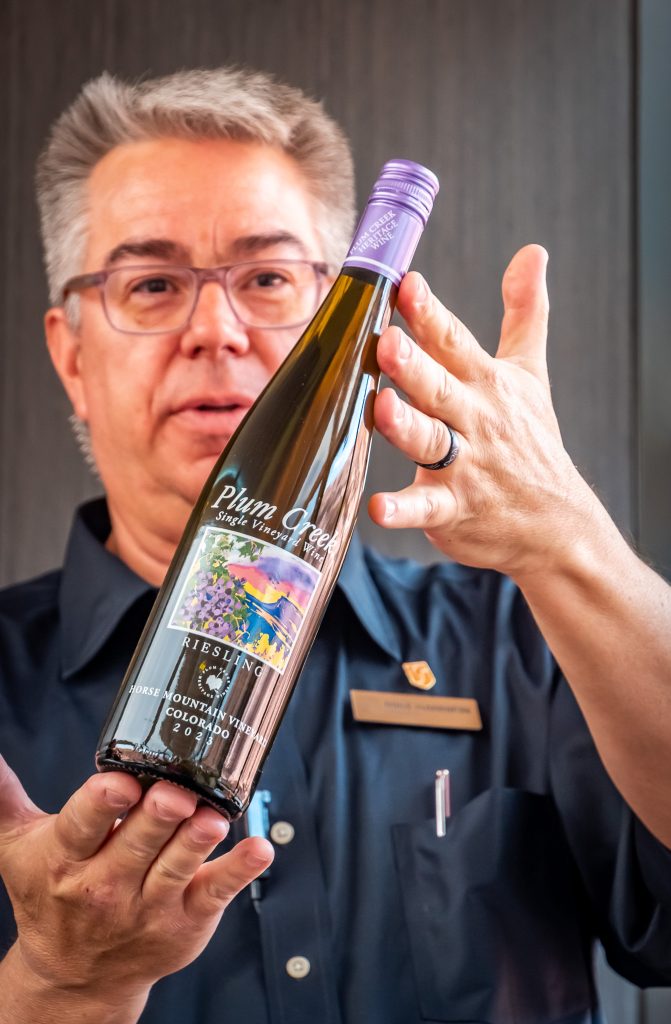
We continued following the Colorado River as it wound its way past towns with names like De Beque and Parachute and cut its way through more canyons. Before I knew it, it was 5:30 and we had reached Glenwood Springs, our stop for the night.
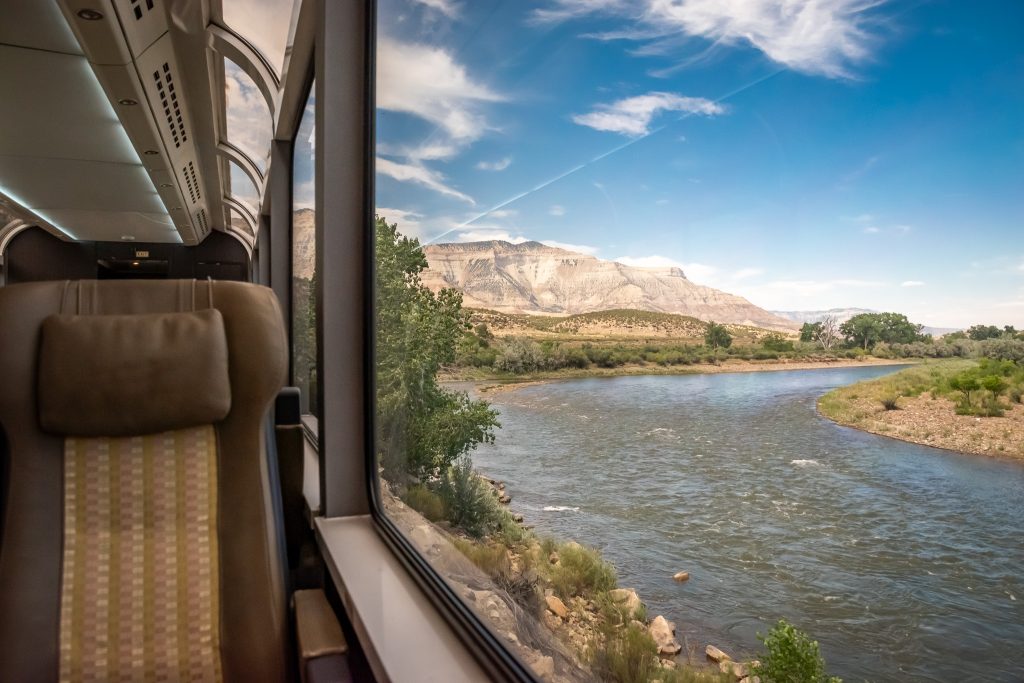
In Glenwood Springs, Colorado
Built in 1906 and restored with all its original details, the Glenwood Springs train station made a fitting stop for a journey such as ours. The Canyon Spirit ground staff greeted us with warm welcomes and eagerly directed us toward our hotels.
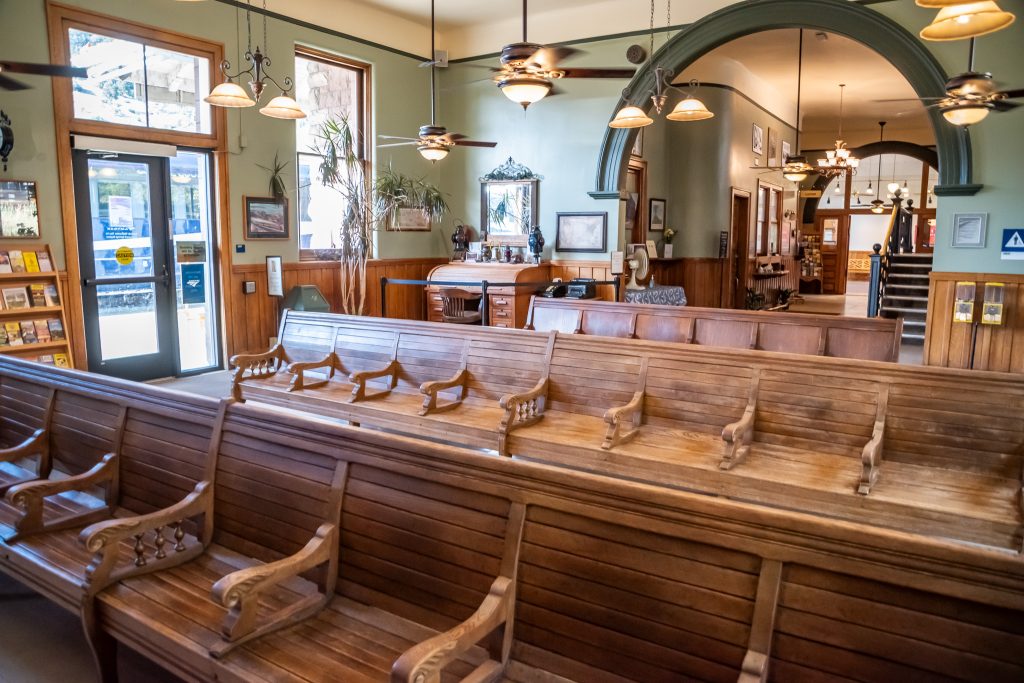
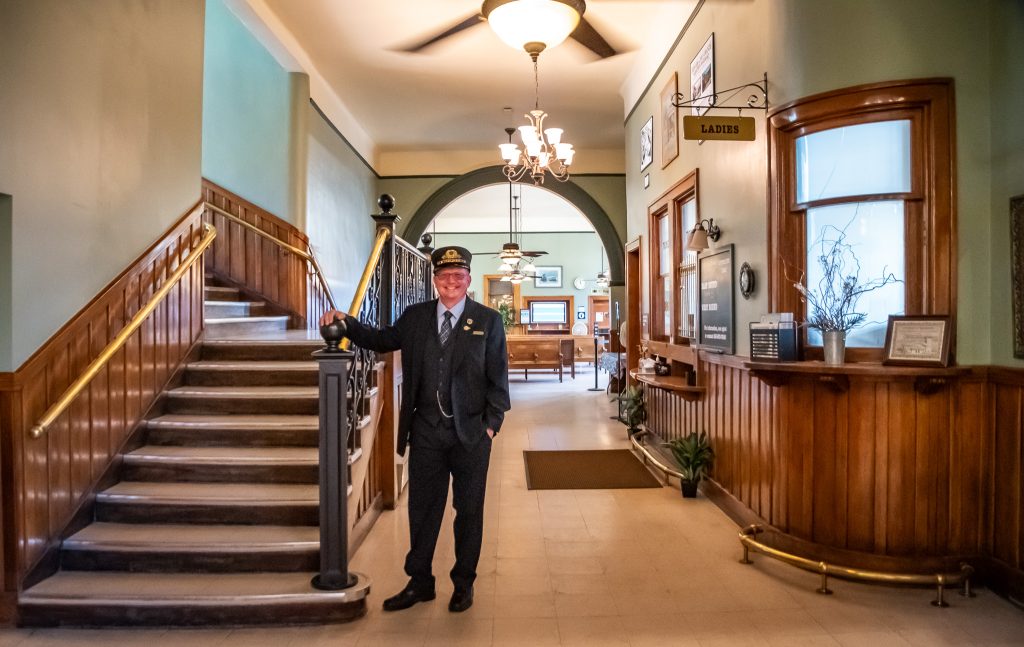
The two Canyon Spirit partner hotels were a very easy walk from the train station. Across the street from the station, the historic Maxwell Anderson expertly combines its 100 years of history with a modern flair.
Five minutes down the road was the equally historic Hotel Colorado. Previous guests included President Teddy Roosevelt, the “Unsinkable” Molly Brown, and Buffalo Bill Cody. I think I was in good company in my well appointed room.
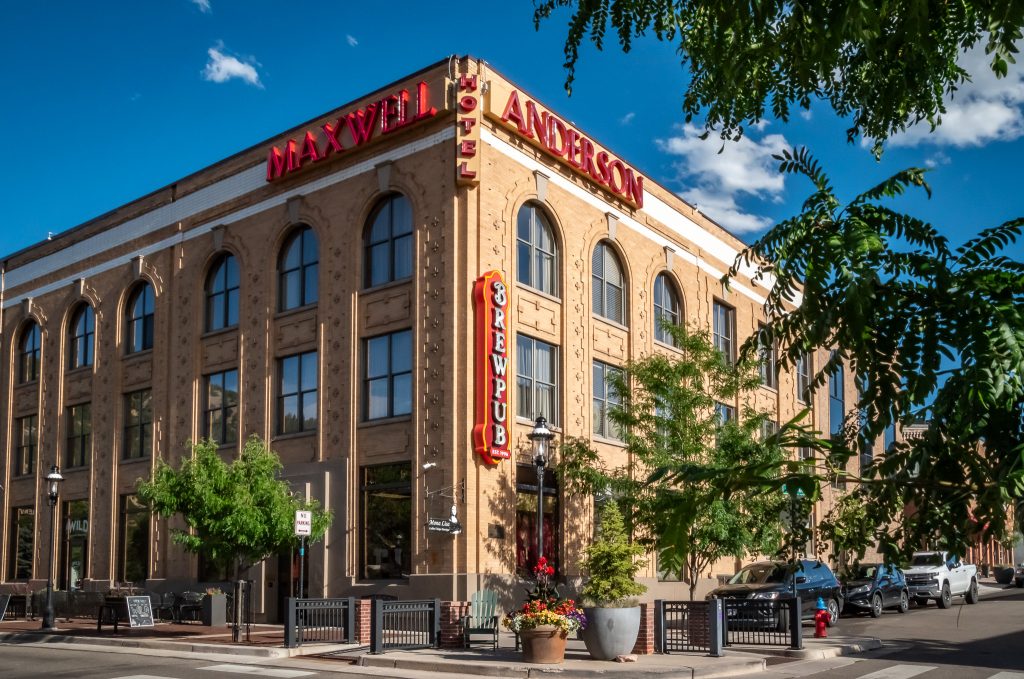

The downtown streets around the train station tempted me with a variety of restaurants to choose from. But since I wanted to have time for a soak in the Glenwood Hot Springs pools, I had a quick dinner at the hotel’s outdoor cafe.
Across the street from the hotel, the Glenwood Hot Springs Resort offered 7 pools of varying temperatures fed by the natural heated mineral waters from the Yampah Spring. The Ute indians were the first to take advantage of these healing, mineral rich waters. In 1888, a group of investors tapped into this resource and built the world’s largest hot spring pool, a title still held today.

Day 3 on the Canyon Spirit – Glenwood Springs, Colorado to Denver, Colorado
My train experience
It was another early morning start as we left the Glenwood Springs train station to begin our journey into the Rocky Mountains. Barely a few minutes out of town, we travelled through the spectacular Glenwood Canyon. For 12.5 miles, the Colorado River cut a narrow path through towering cliffs, exposing millions of years of geologic history.

I’ve driven through this scenery before, but I couldn’t take my eyes off the road and appreciate the view while I was behind the wheel. This time, I could take it all in, without having to worry about staying in my lane.
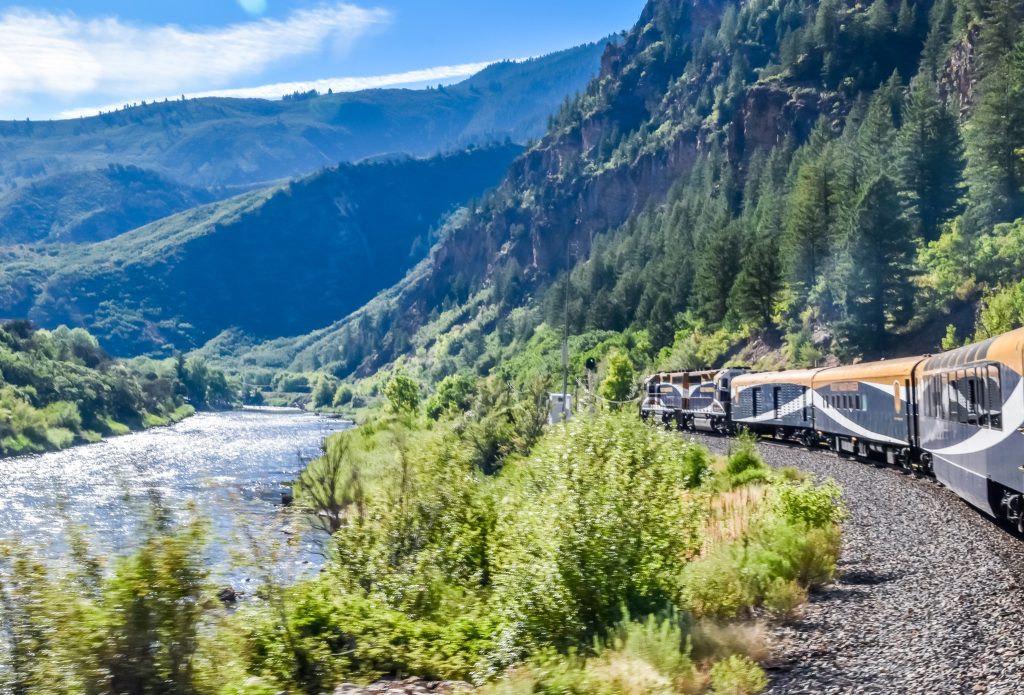
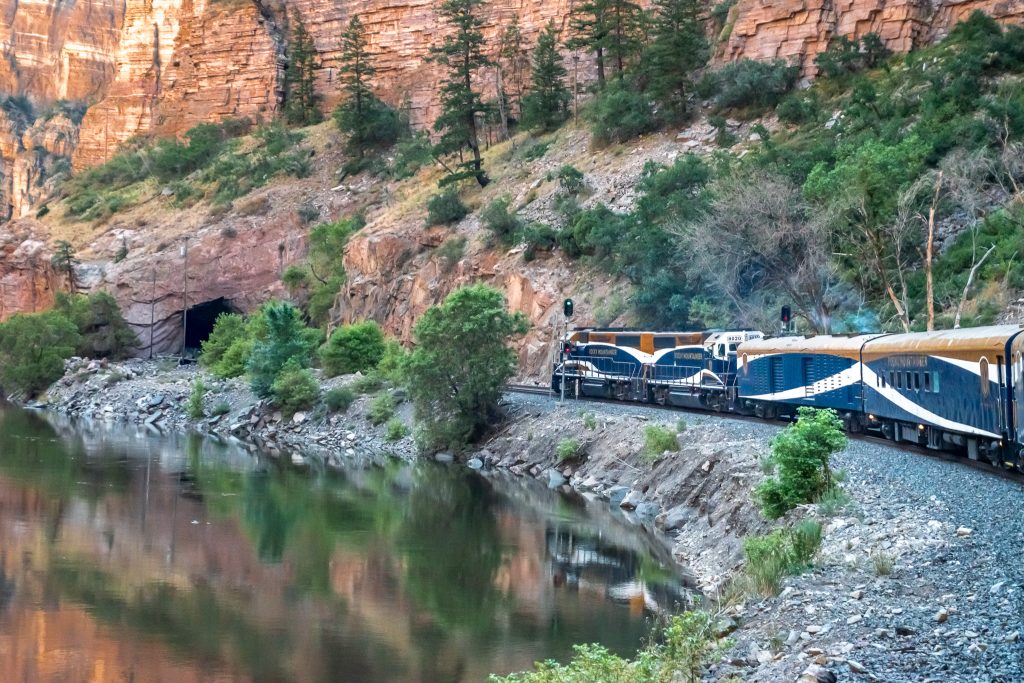
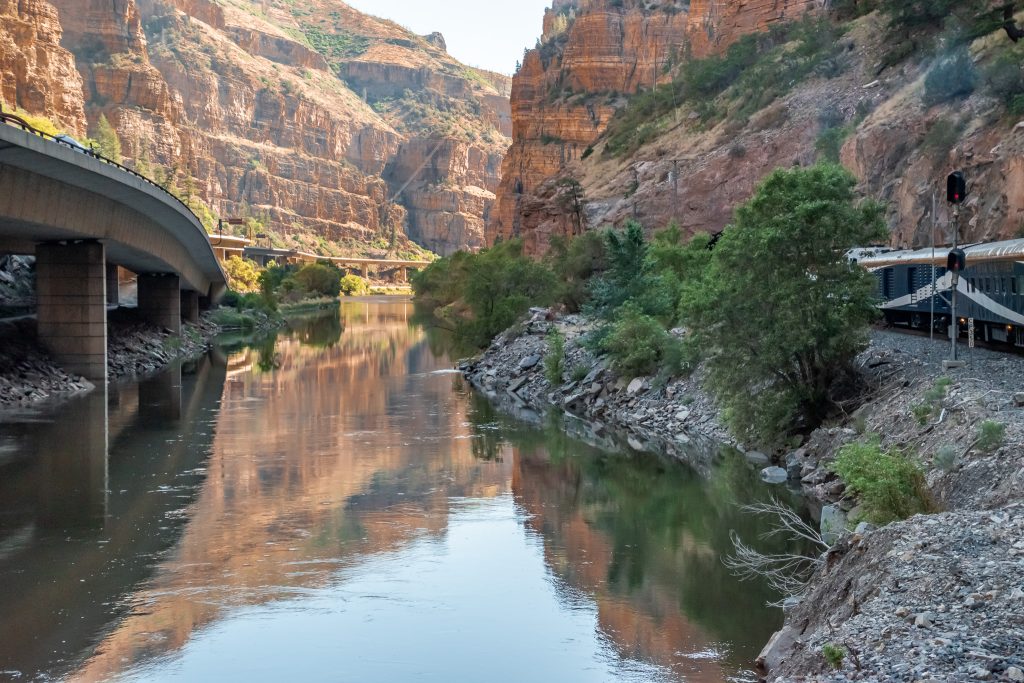

Breakfast was offered at a leisurely pace so that we could take in the scenery. I definitely didn’t turn down the warm cinnamon roll, and the hearty avocado toast hit the spot.
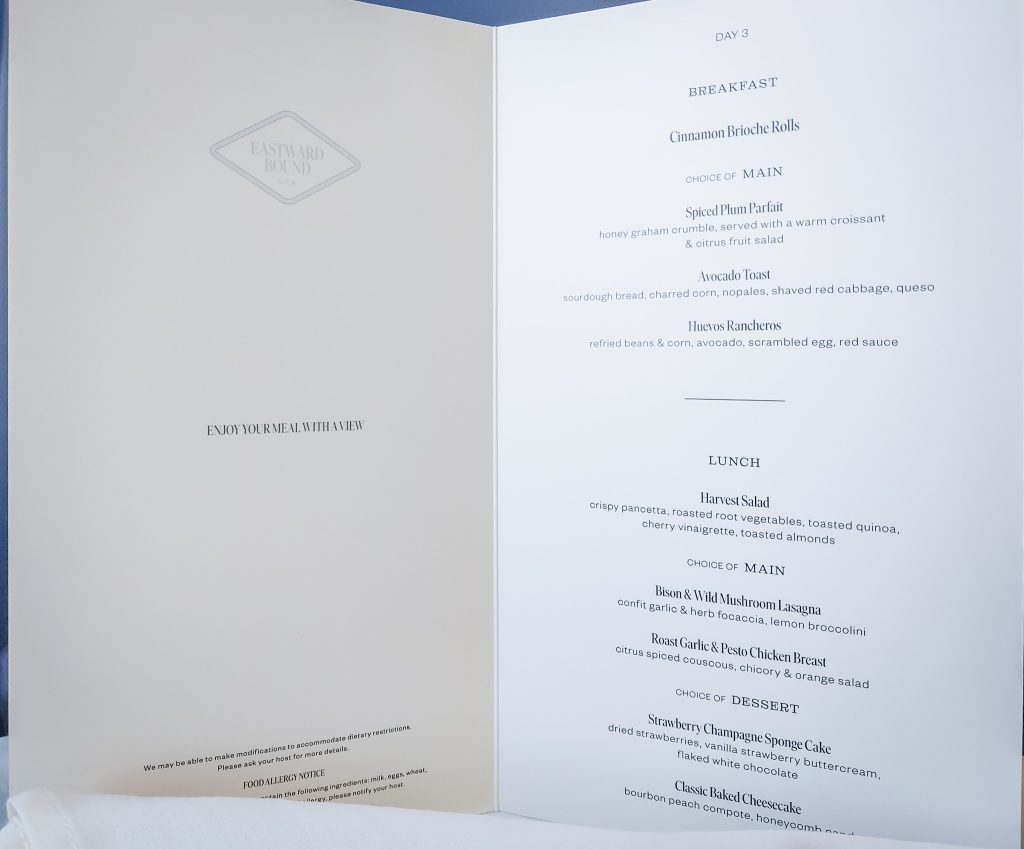
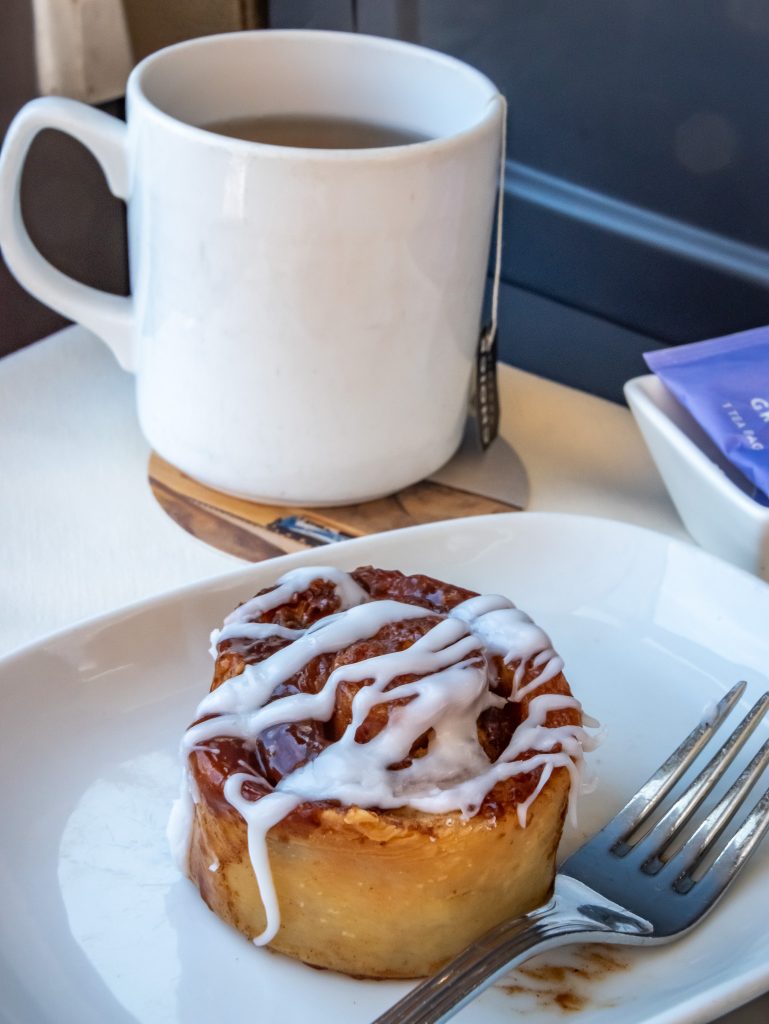
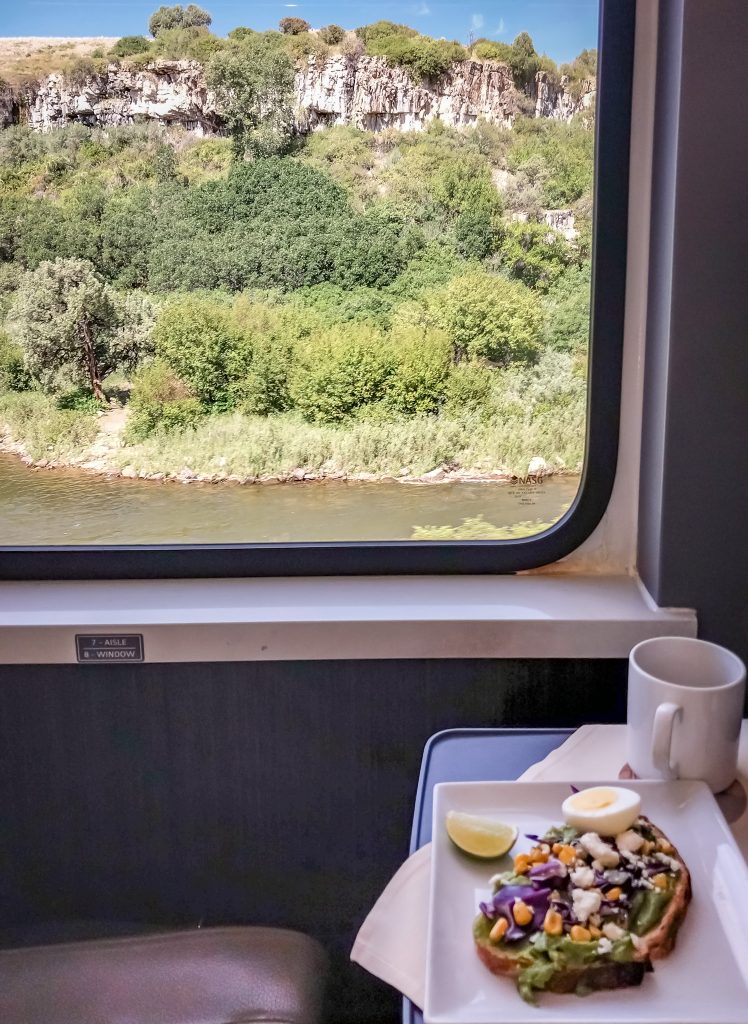
The scenery of the past two days had certainly been interesting, but today was nothing short of spectacular. I had my nose to the window for the whole day as we climbed up and through the Rocky Mountains.
Our train continued to follow the Colorado River for most of the day. Once we veered away from the I-70 corridor, the scenery was quite unspoiled and mostly undeveloped. Along the way, we passed ranches, rafters, and fishermen on the river.



The diversity in the landscape was amazing. We passed by red sandstone cliffs in Burns Canyon and through the towering walls of Gore Canyon and Byers Canyon. By this point, the rough Colorado River was the playground for expert kayakers.
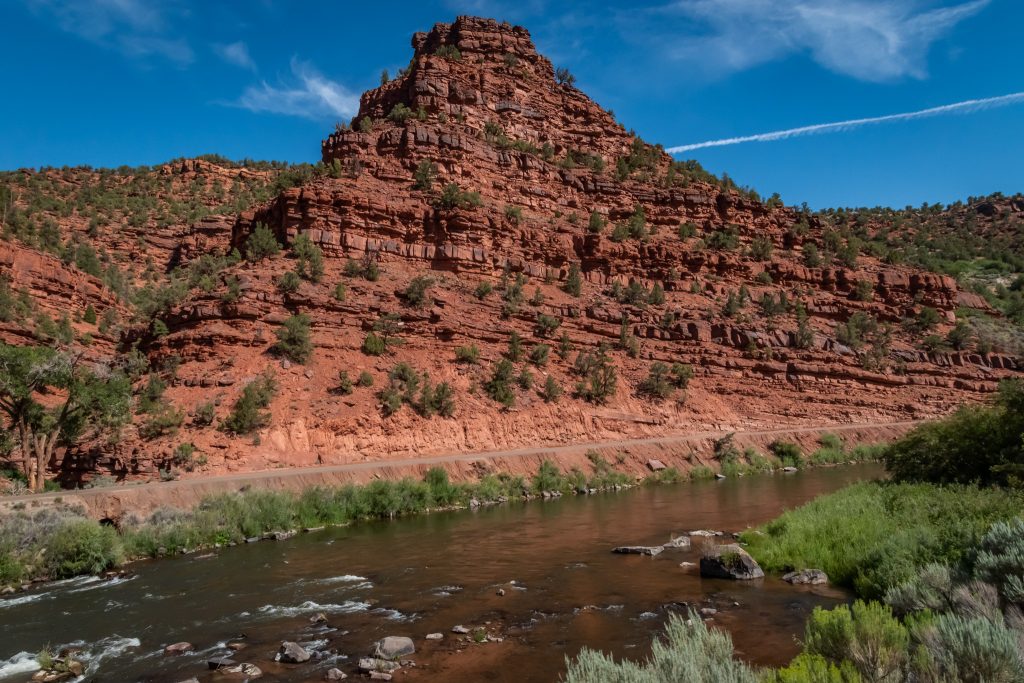

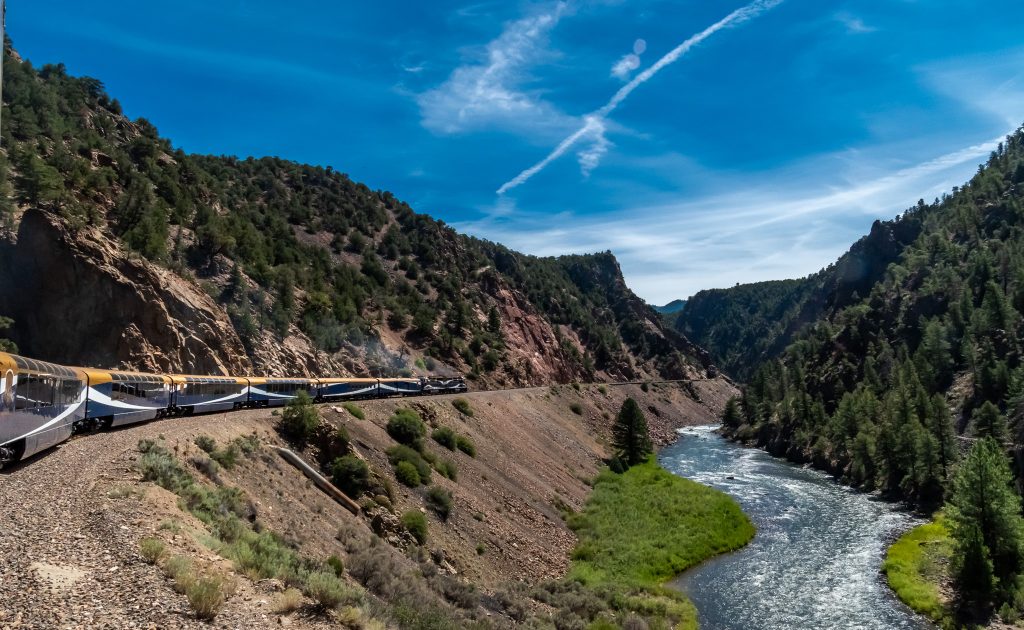
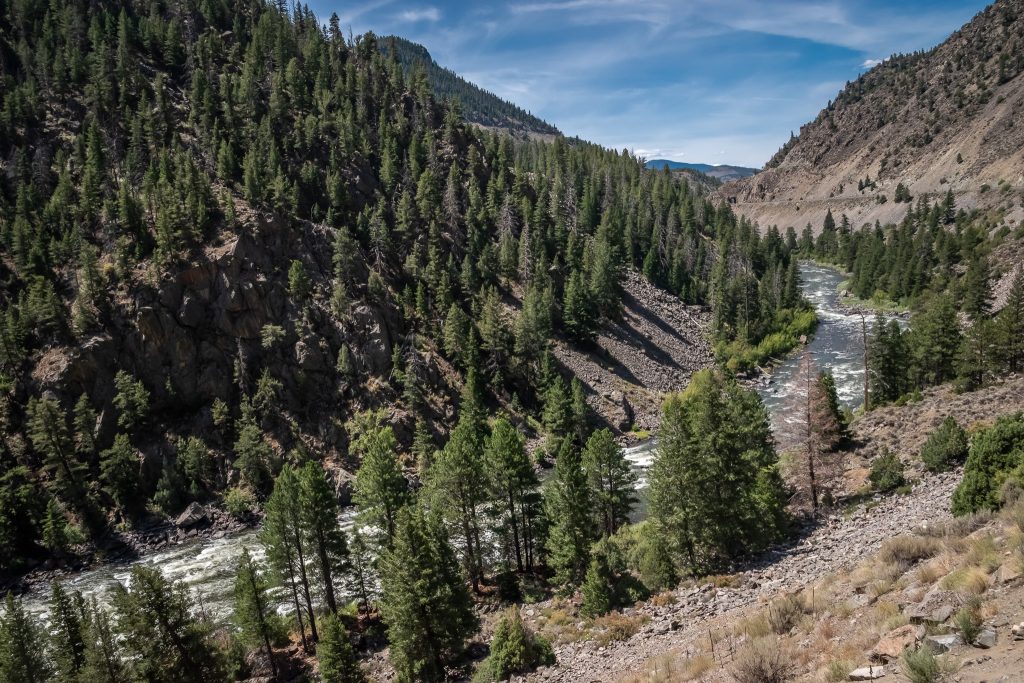

Cutting a 6 mile swath through the Continental Divide, the Moffat Tunnel is an engineering marvel that took us under the mountains. 30 more tunnels followed as we continued our trek down the Front Range of the Rocky Mountains toward Denver.
And then we travelled over another engineering marvel: the Big 10 Curve, a series of tight 10-degree curves that maintain a manageable track grade, allowing us to descend to the Mile-High City.


While passing through this scenery, we also had another great lunch. This time, I chose the Bison and Wild Mushroom Lasagna, followed by the Strawberry Champagne Sponge Cake, and neither disappointed me.
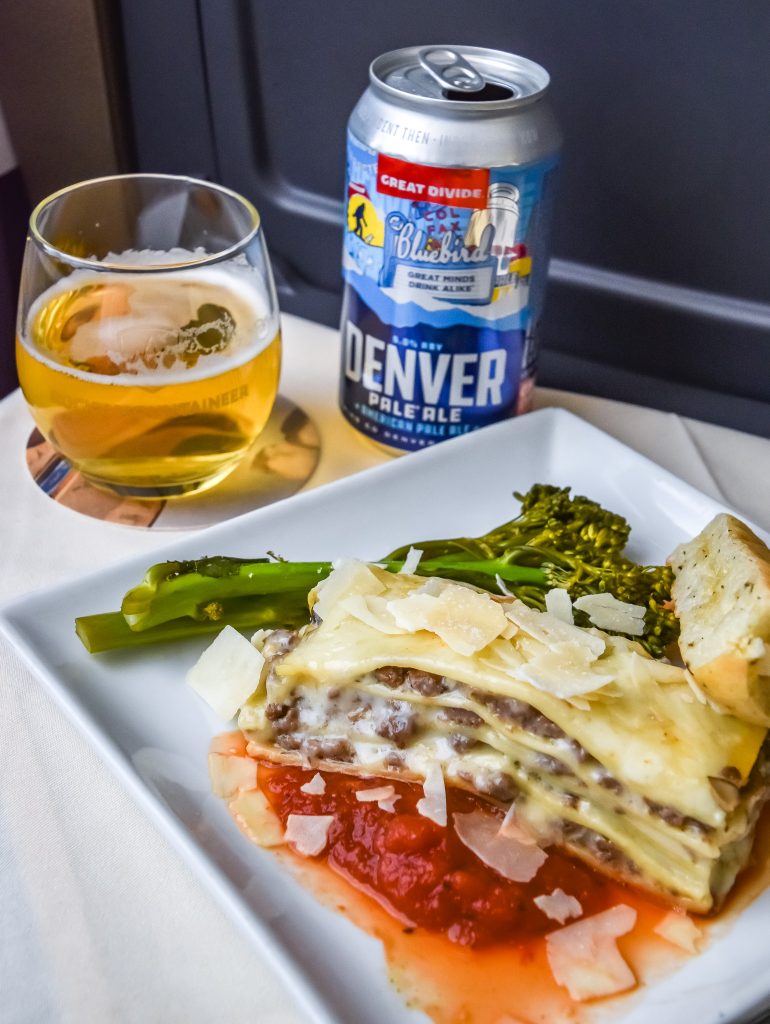
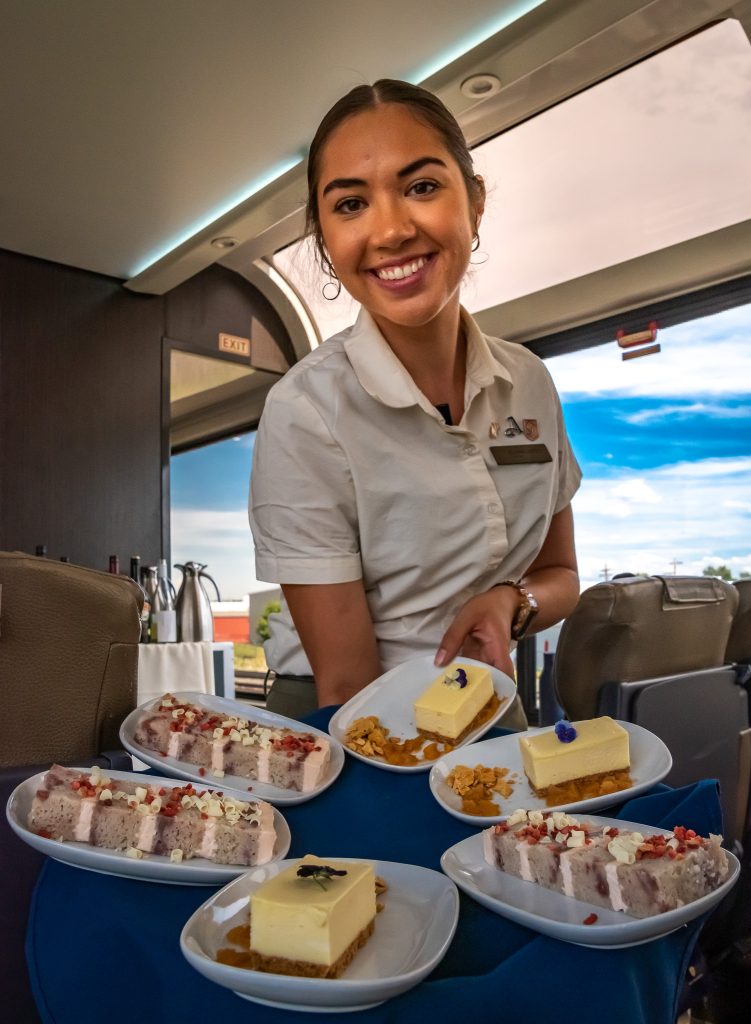
In Denver, Colorado
By 5 PM, our train pulled into the beautiful Denver Union Station. It was amazing how quickly and comfortably the 8-hour train ride went by. Between enjoying drinks in the lounge cars and popping into the open-air vestibule to get photos, I certainly did not sit in my seat for that long.
I was quite sad to see this trip come to an end, but it was now time to say goodbye to all our hosts. After three days, the staff felt more like dear friends, and parting truly was “such sweet sorrow.”
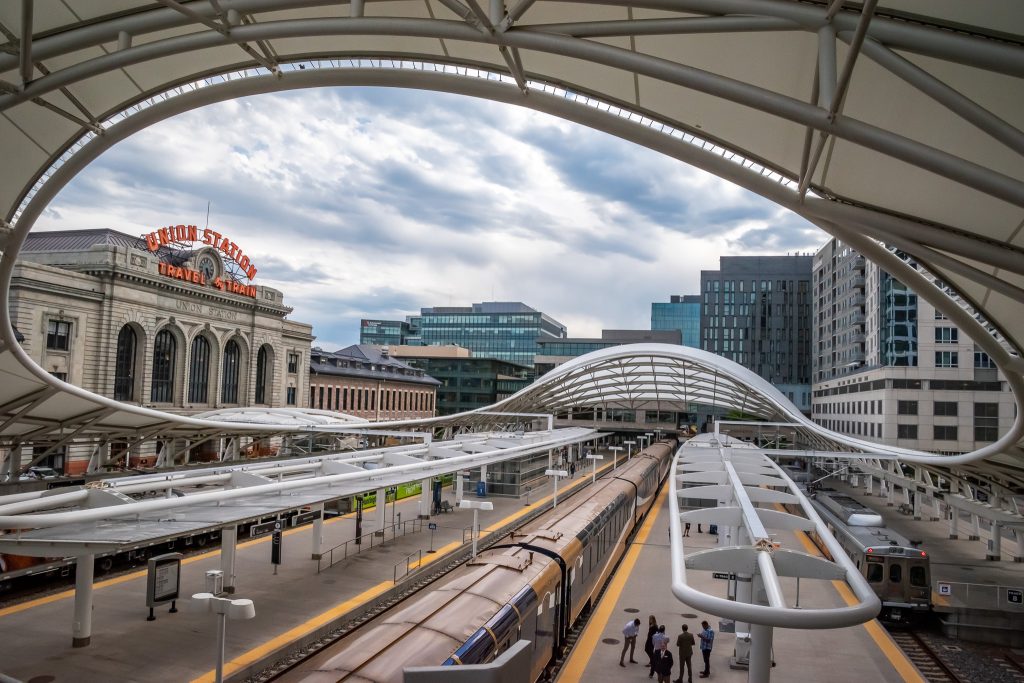

A short 5 minute walk took me to the artsy vibe of the Hotel Indigo. The neighborhood in this part of Denver had many restaurants to choose from for dinner, including the city’s first craft brewery, the Wynkoop Brewing Company.
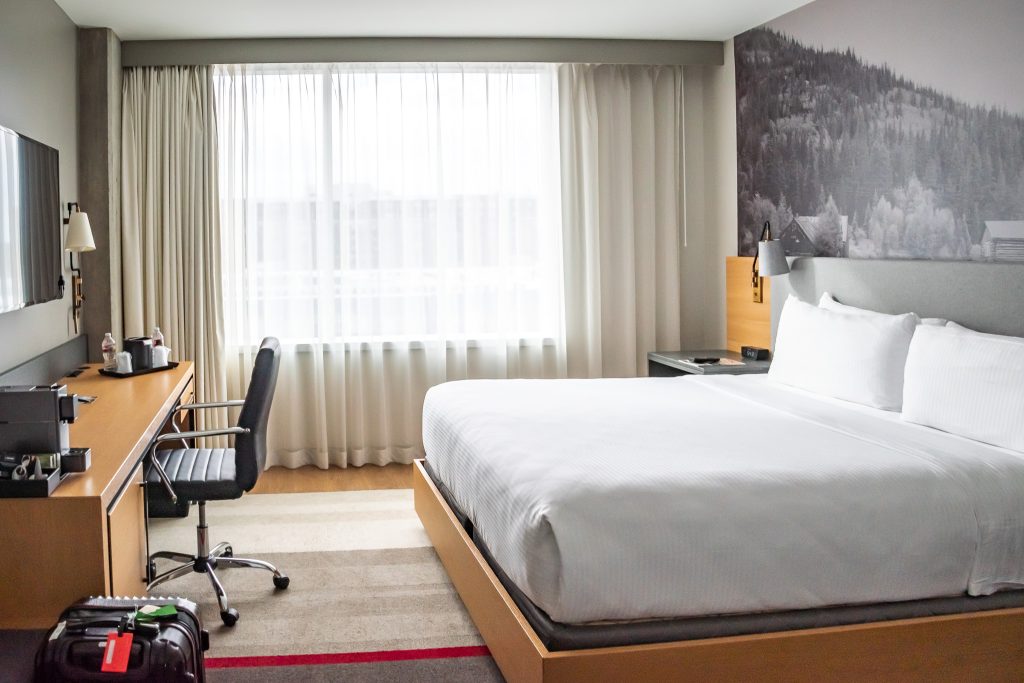
Ending in Denver, Colorado
From the Hotel Indigo, it was a quick walk on the bridge over the train tracks to get back to Denver’s Union Station where I had some nice options for an early morning cup of coffee. Then, it was an easy 40 minute train ride to the airport and my flight home. The A Line commuter train ran every 15 minutes, and my ticket was only $10. I wish it were always this easy to get to an airport.

What I really loved about my Canyon Spirit train journey
- The luggage handling.
Once I overcame my initial anxiety about leaving my luggage in my hotel room, I loved the freedom of not having to deal with it. It felt very liberating to get on and off the coach and the train with just my small day bag. I quickly got used to this “leave it and forget” aspect and wish I could have that on all my trips.
- Receiving my hotel room key on board the train.
It was so nice to just be able to walk into the hotel and go straight up to my room.
- The service was spectacular!
For me, it was the fantastic staff that took the trip from great to memorable. They were personable, engaging, and passionate about taking good care of their guests.
- The food and drink were delicious.
Despite the small kitchen, the chef and her staff prepared excellent meals with flavors that added to my southwest experience.
- The changing scenery.
From the dessert to red rock cliffs to granite-faced mountains, this train ride made it easy to experience and appreciate the beauty and diversity of the landscape in this part of the US.
- The slow, unhurried pace
It was a joy to travel at such a slow pace where the goal was the journey itself.
- The Canyon Spirit Milepost
Each seat has a copy of the Canyon Spirit Milepost newspaper-like chronicle that provides a wealth of information about the route, the region’s history, and the natural features along the way.
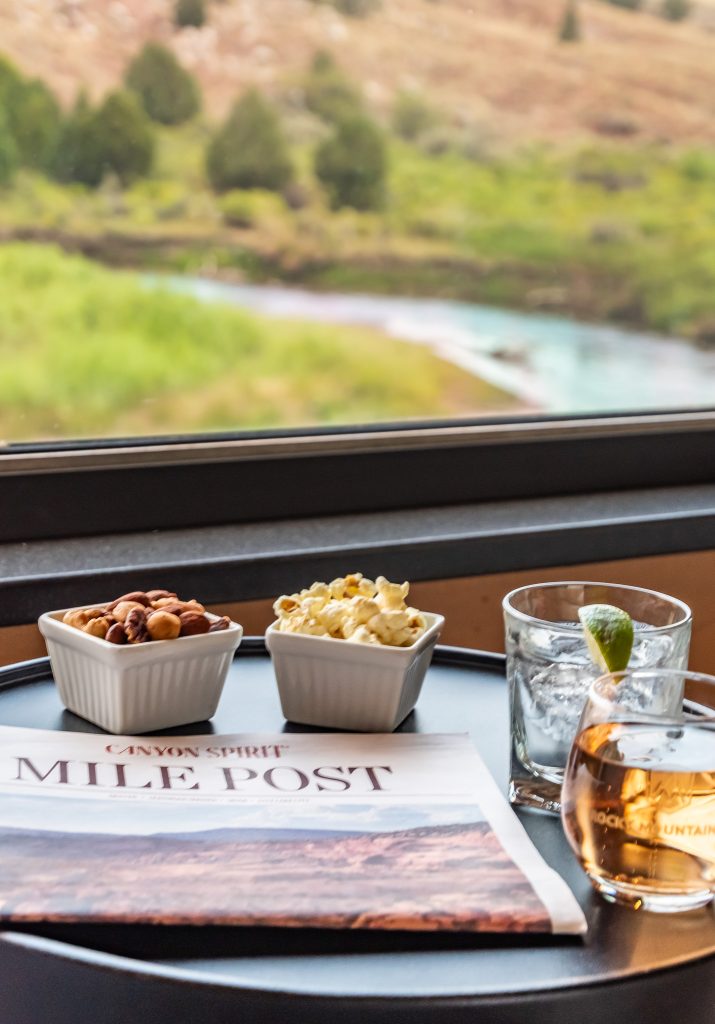
After spending three days on the Canyon Spirit, I definitely feel like I had a taste of the golden age of train travel.
Please note that my trip on the Canyon Spirit was hosted. All content and opinions are my own.
Listen to my podcast about my Canyon Spirit experience: The Canyon Spirit – A Luxurious Train Journey Through the American Southwest
Also, read the accompanying story to the podcast: The Canyon Spirit – A Luxury Train Journey Through the American Southwest
Another article I wrote for ShebuysTravel.com that was syndicated to MSN and 23 McClatchy news outlets: All Aboard the Canyon Spirit: A Luxury Train Journey Through the Heart of the Southwest
Other stories of interest:
A Salt Lake City to Yellowstone itinerary: My Yellowstone Day Trip – A 10 Day Salt Lake to Yellowstone Itinerary
Grand Teton National Park Inspiration: 25 Photos to Inspire Your Next Grand Teton Itinerary
Thanks for visiting.
Rose
Pin this!

